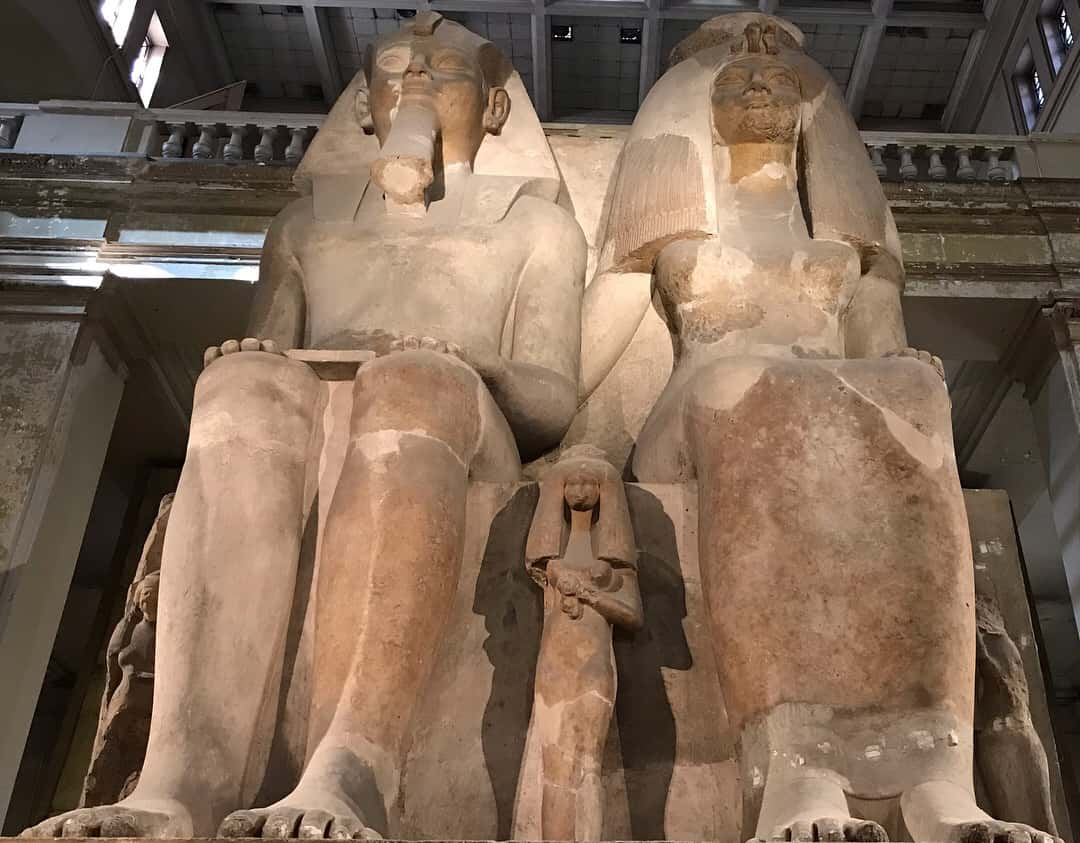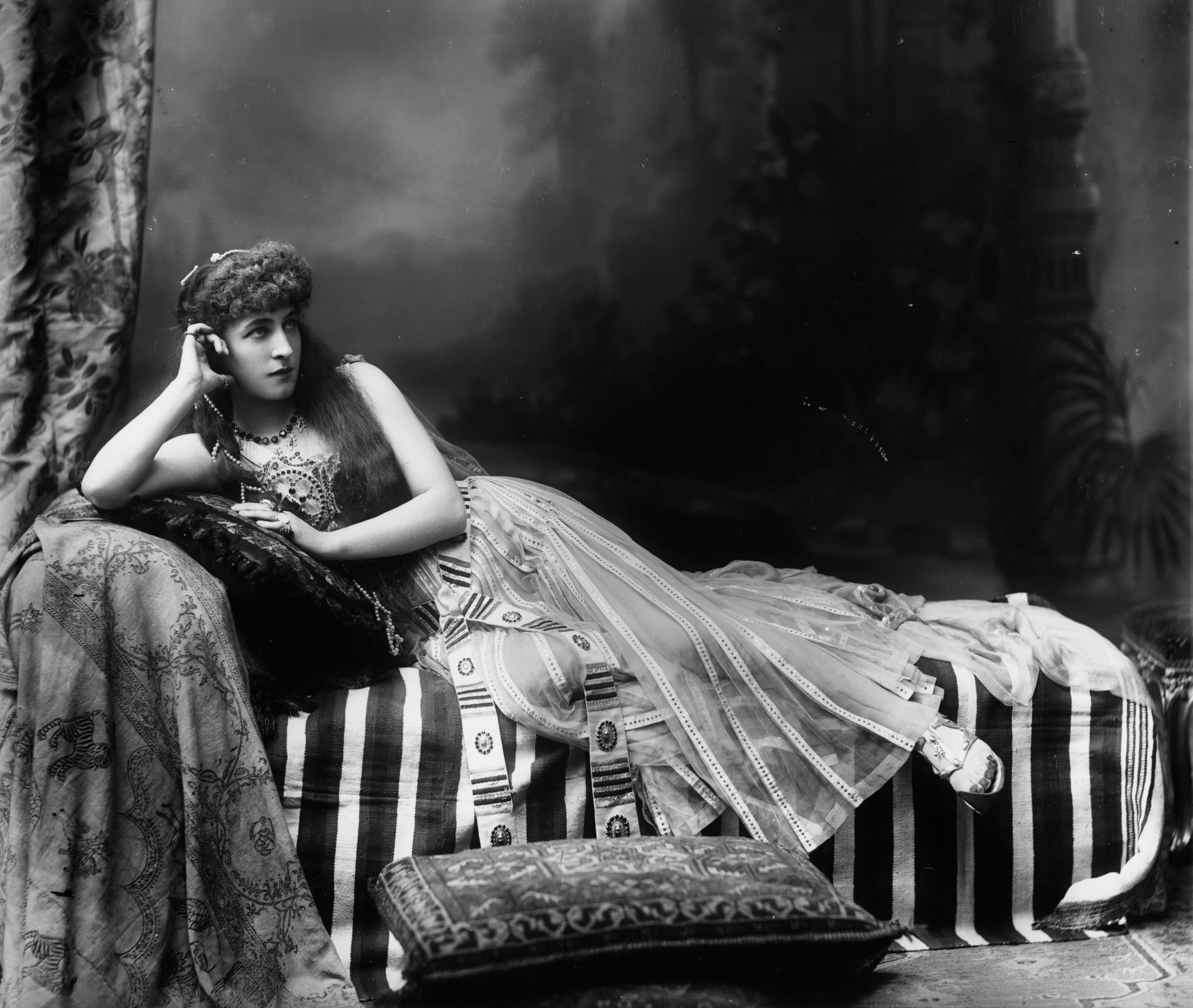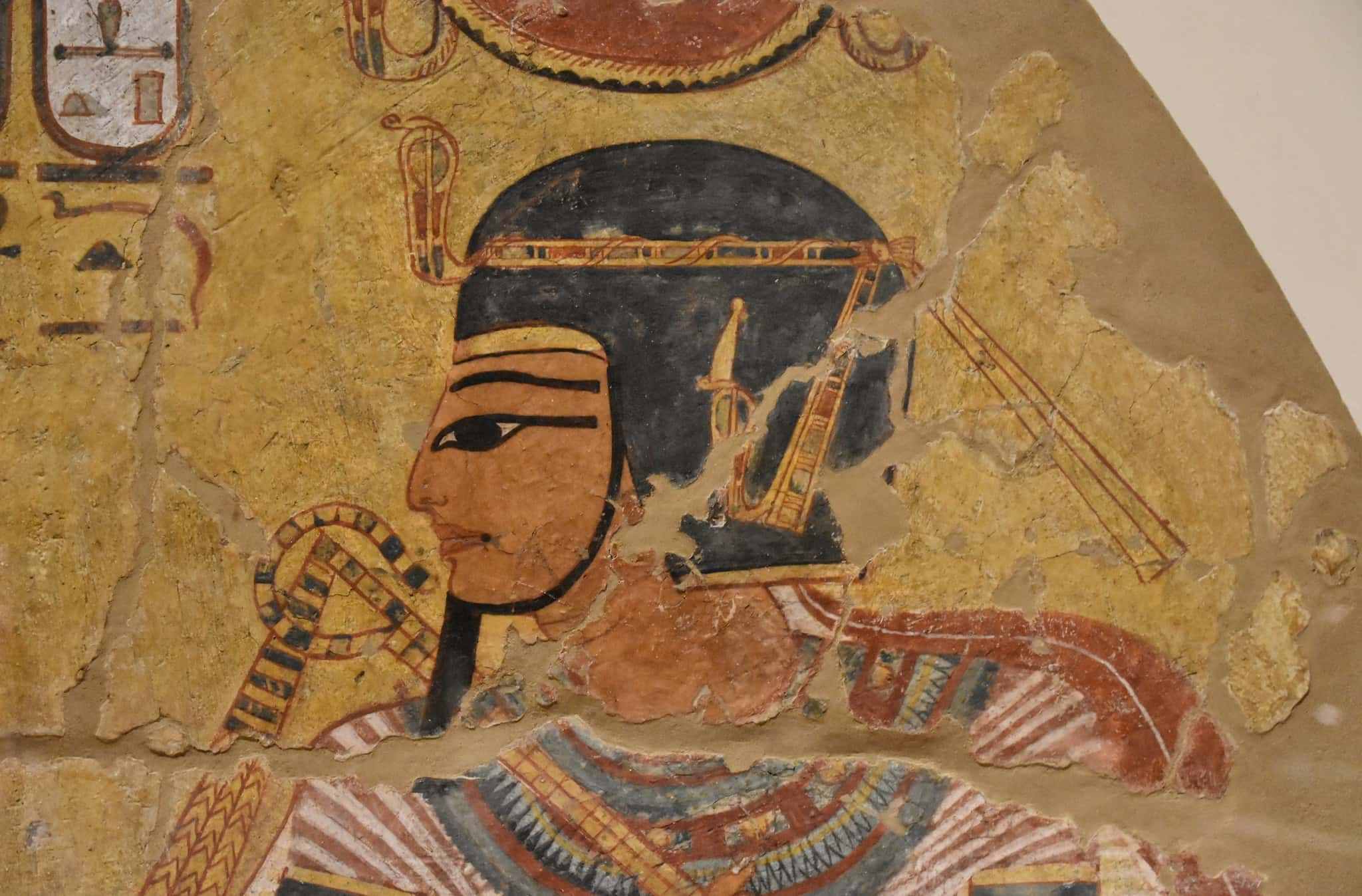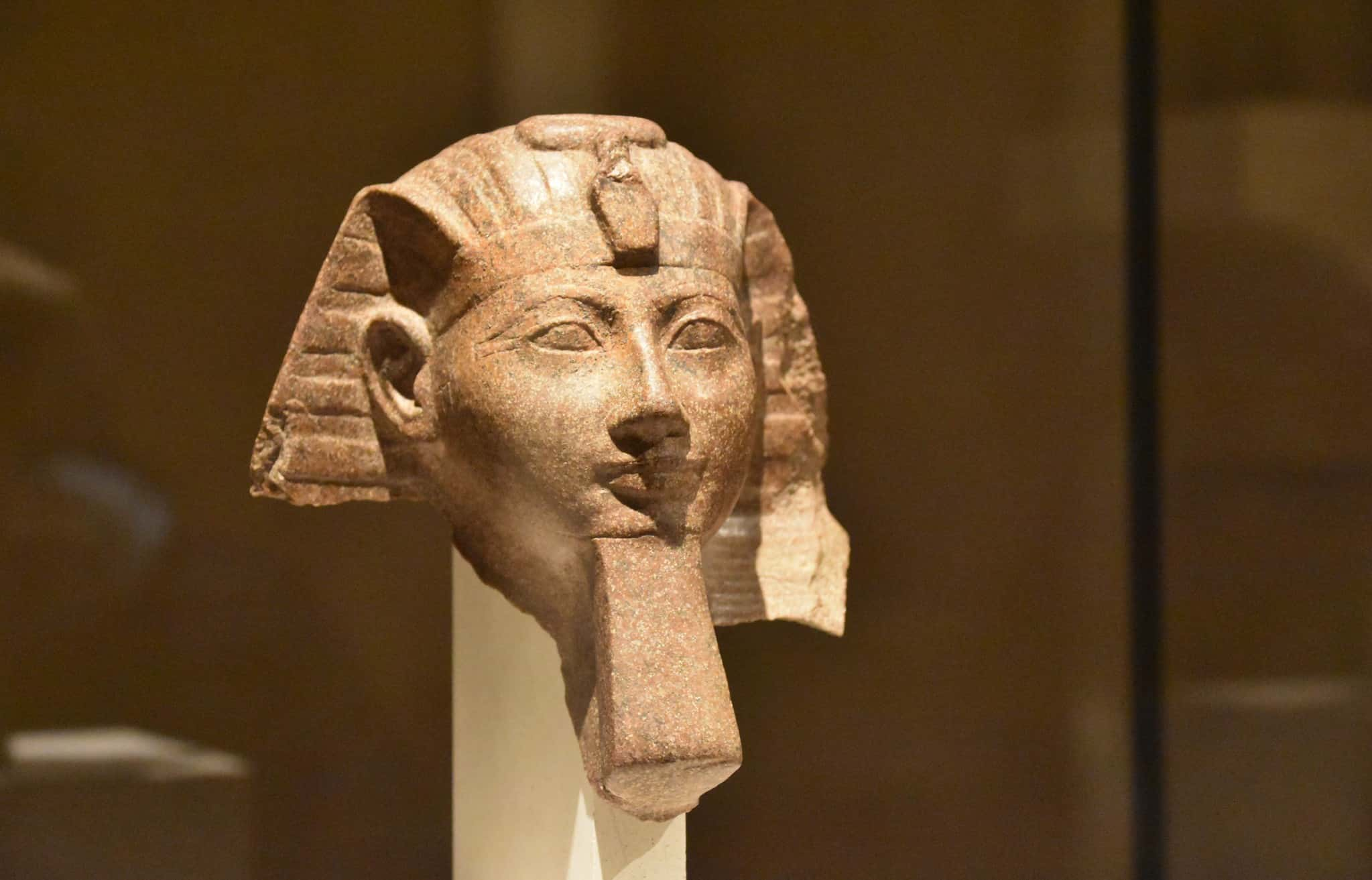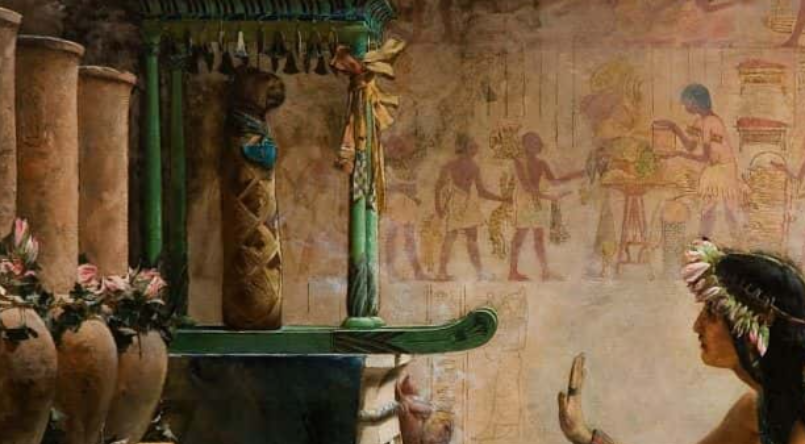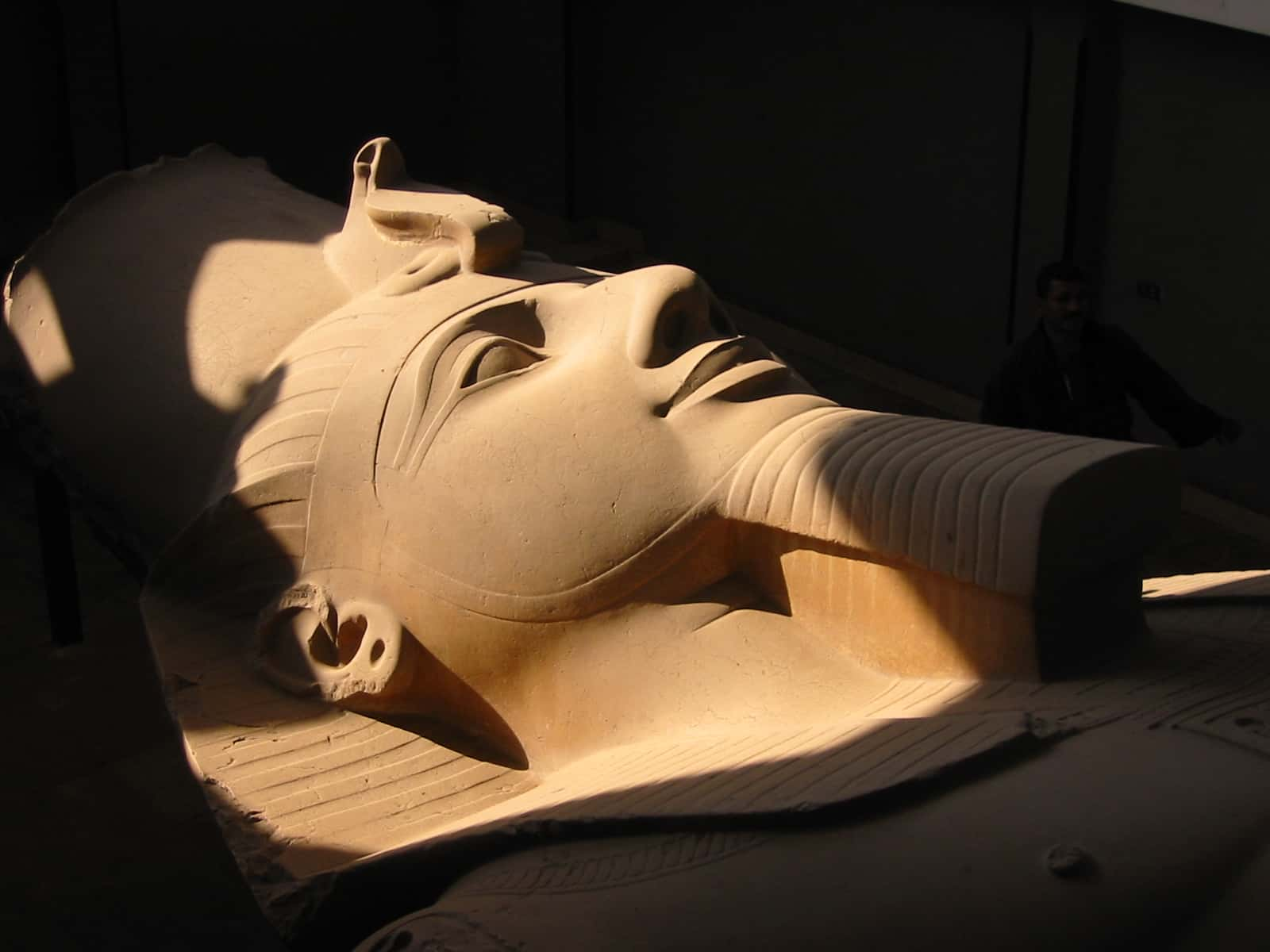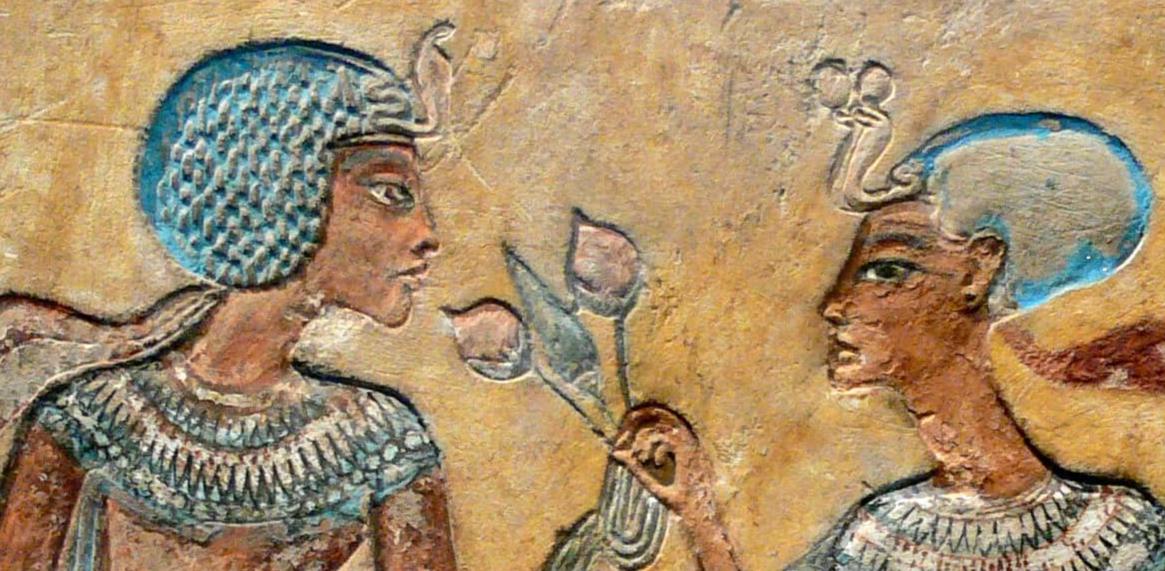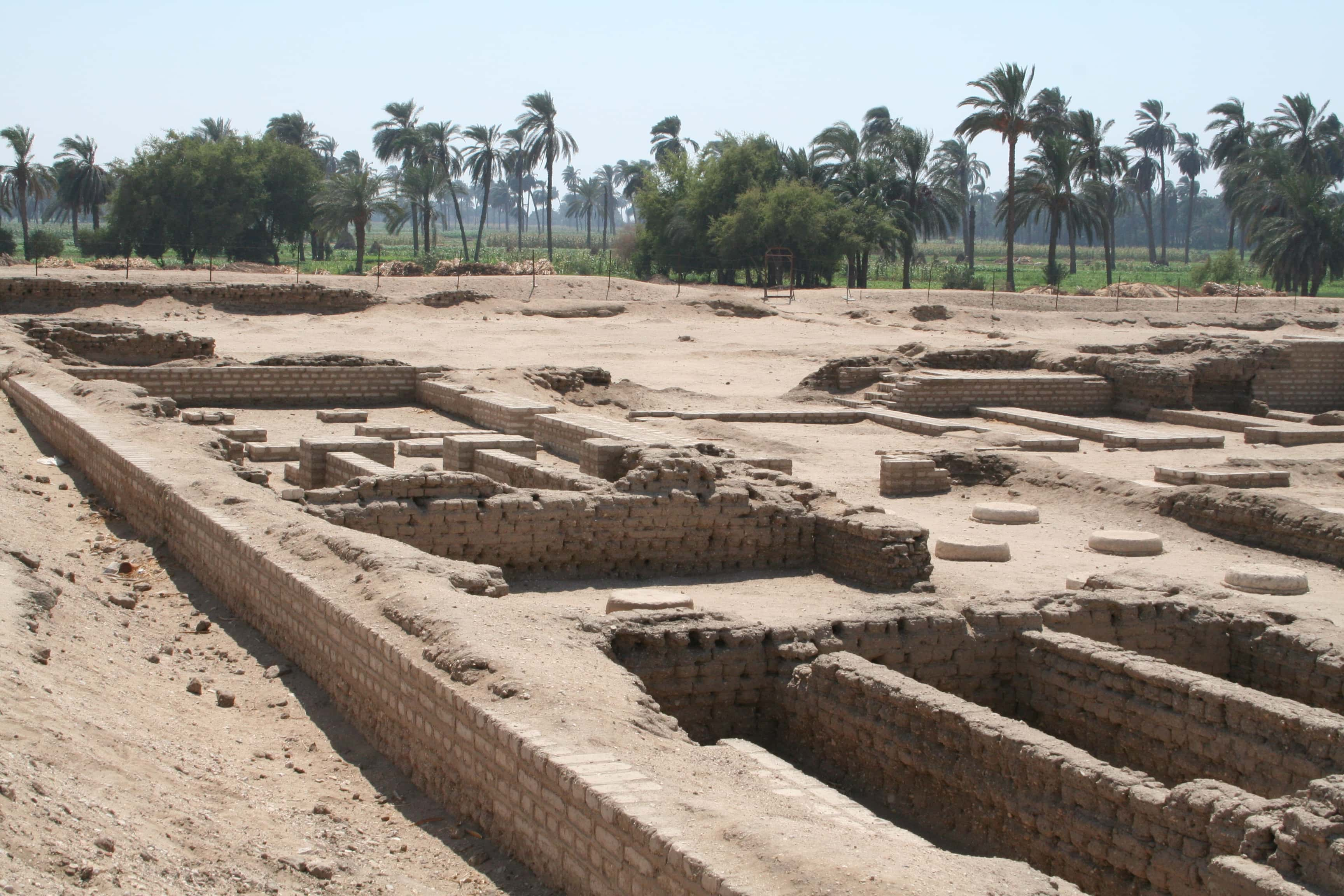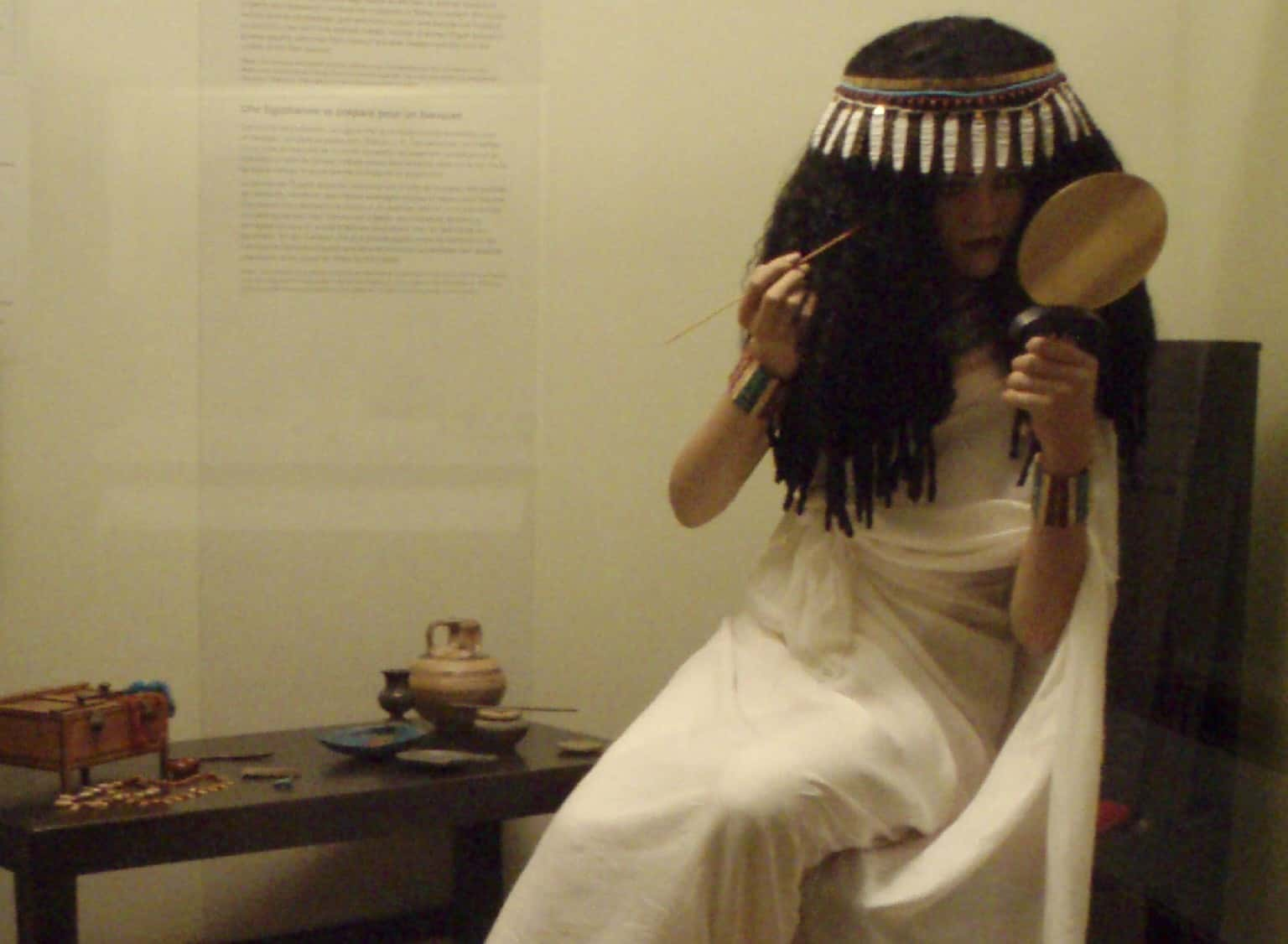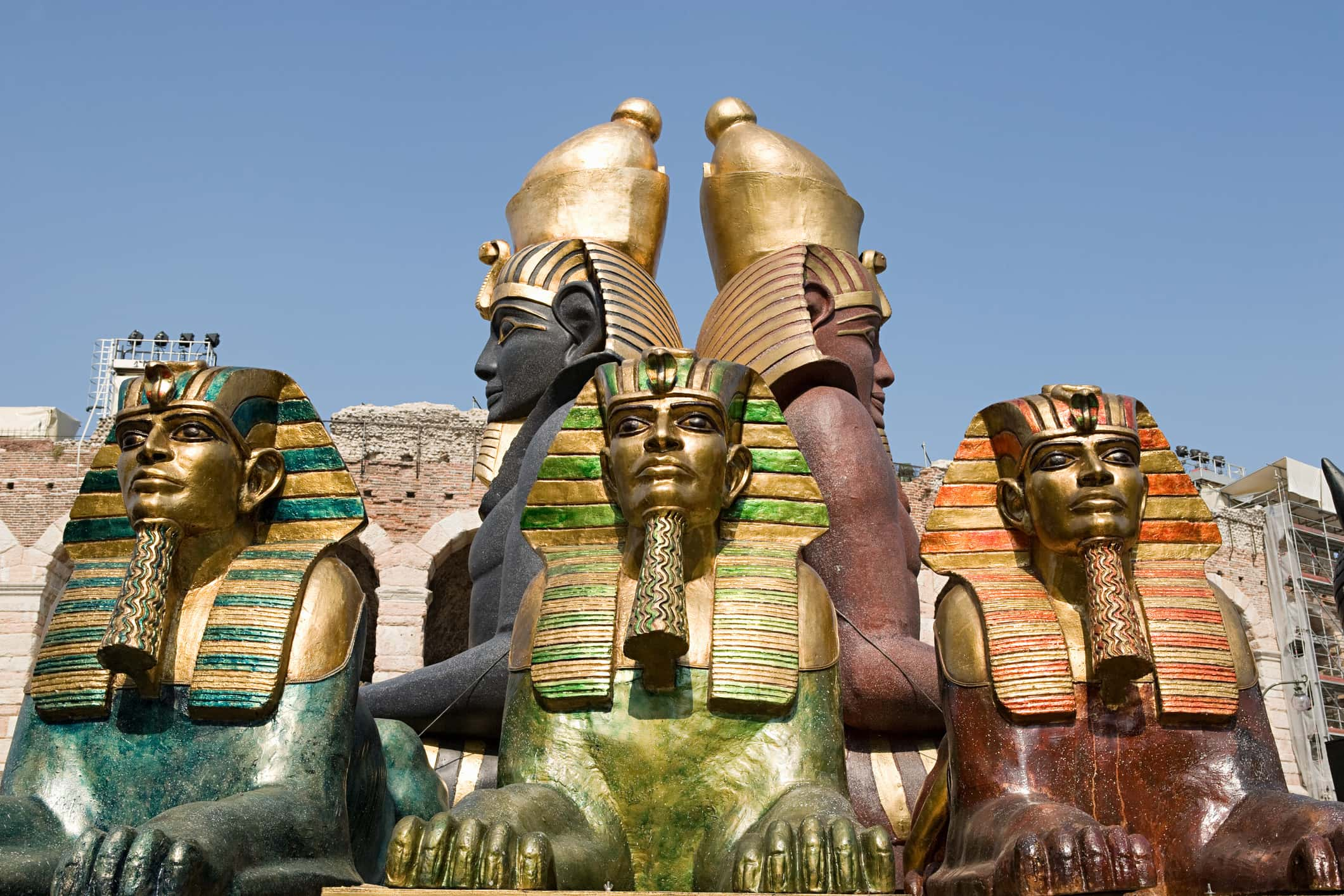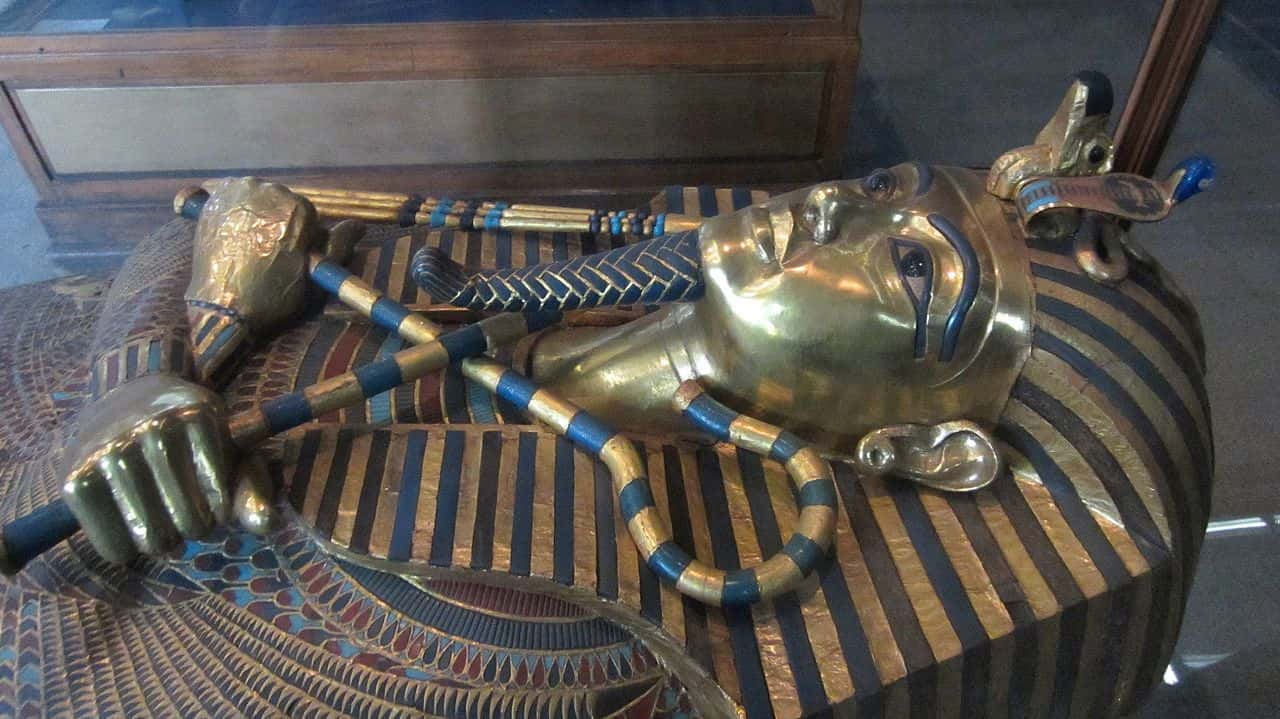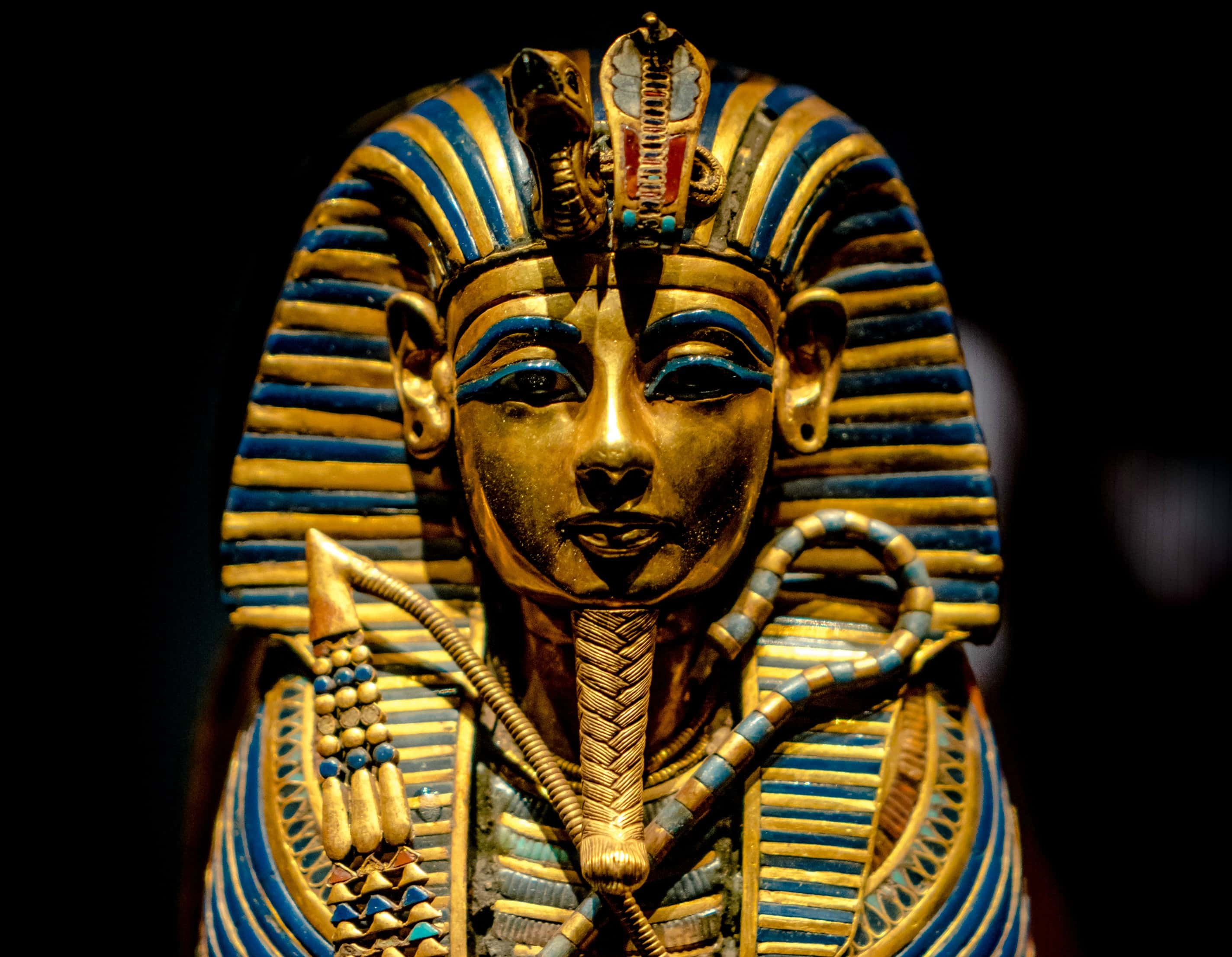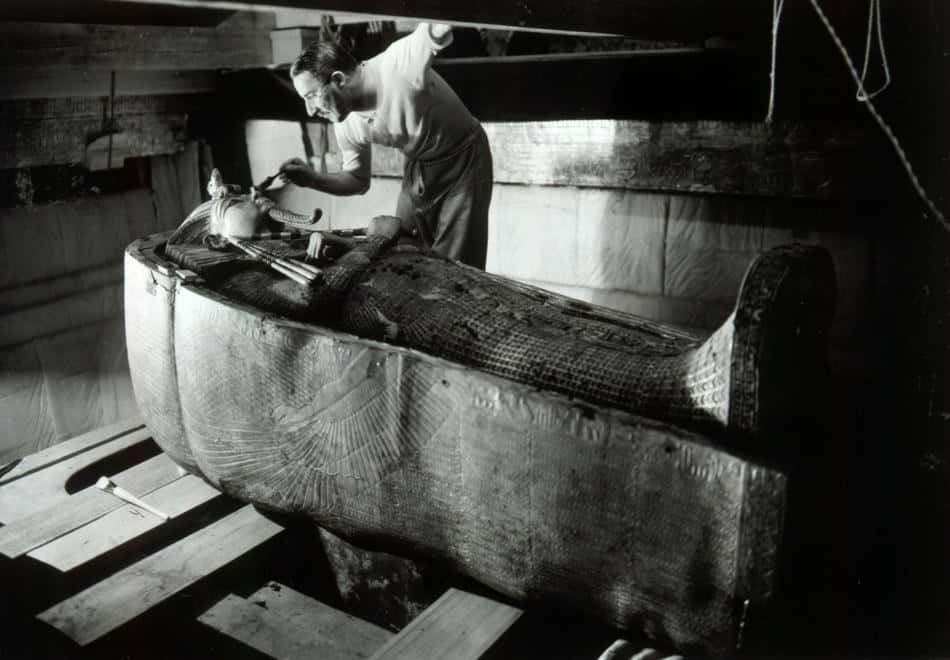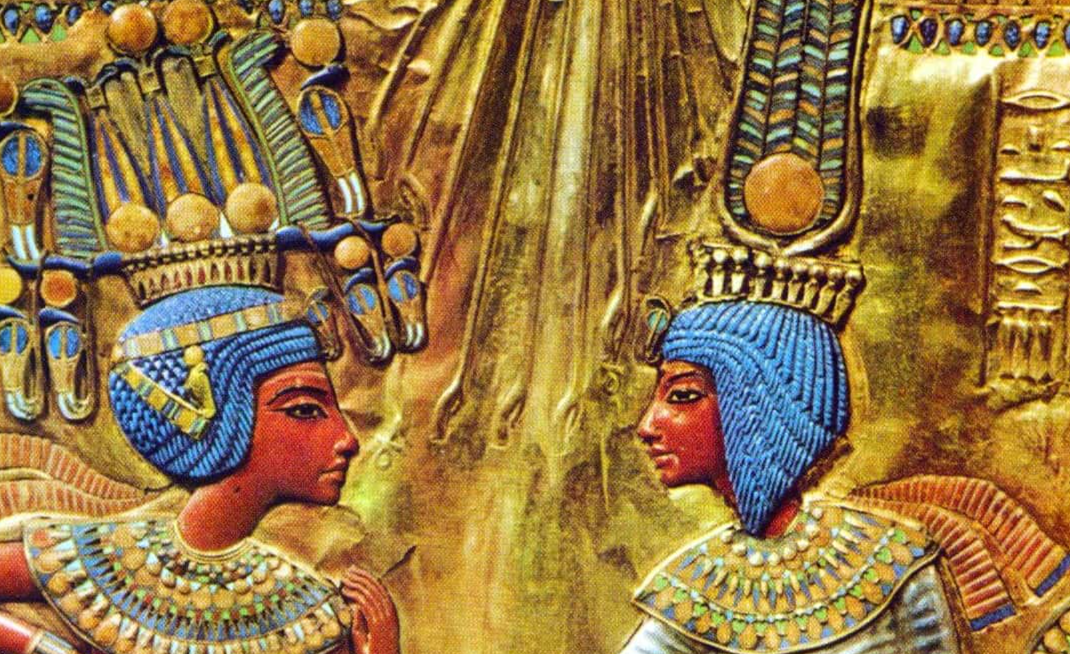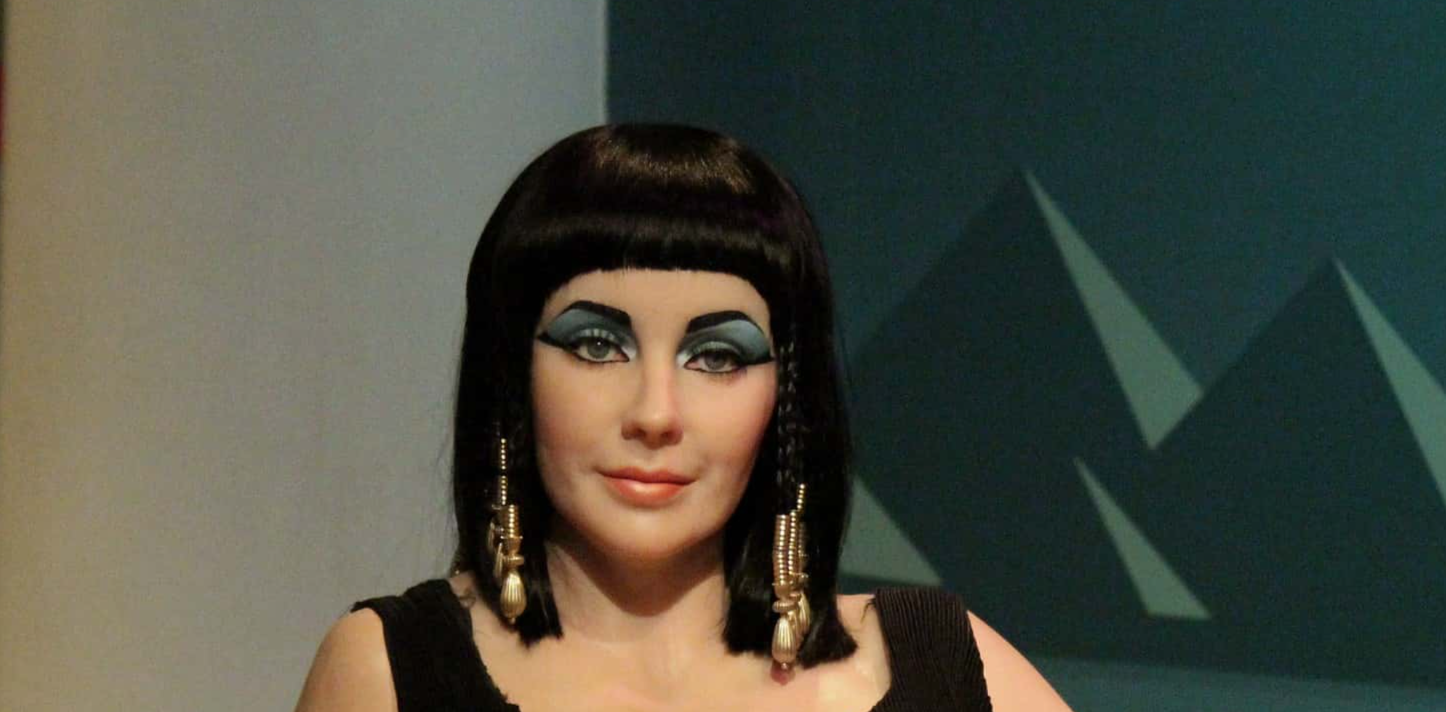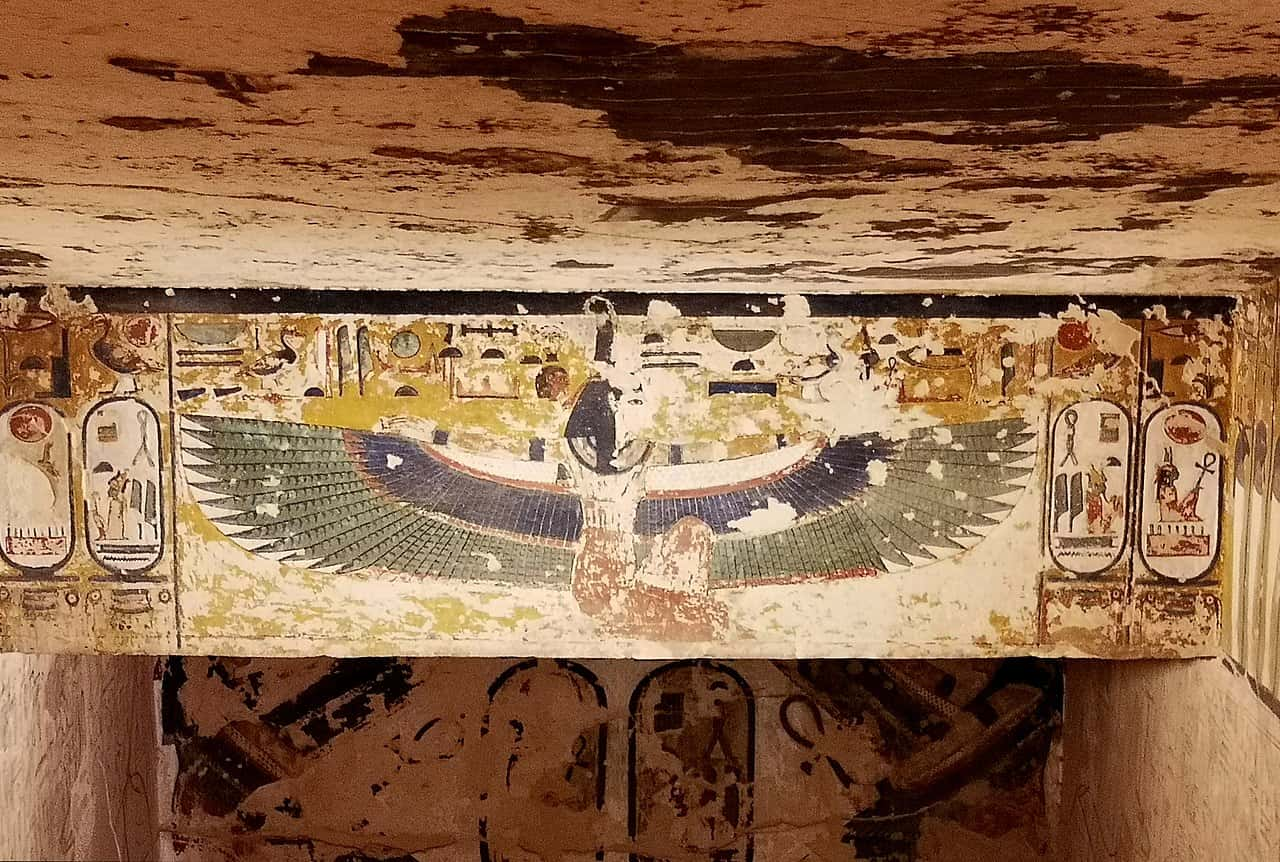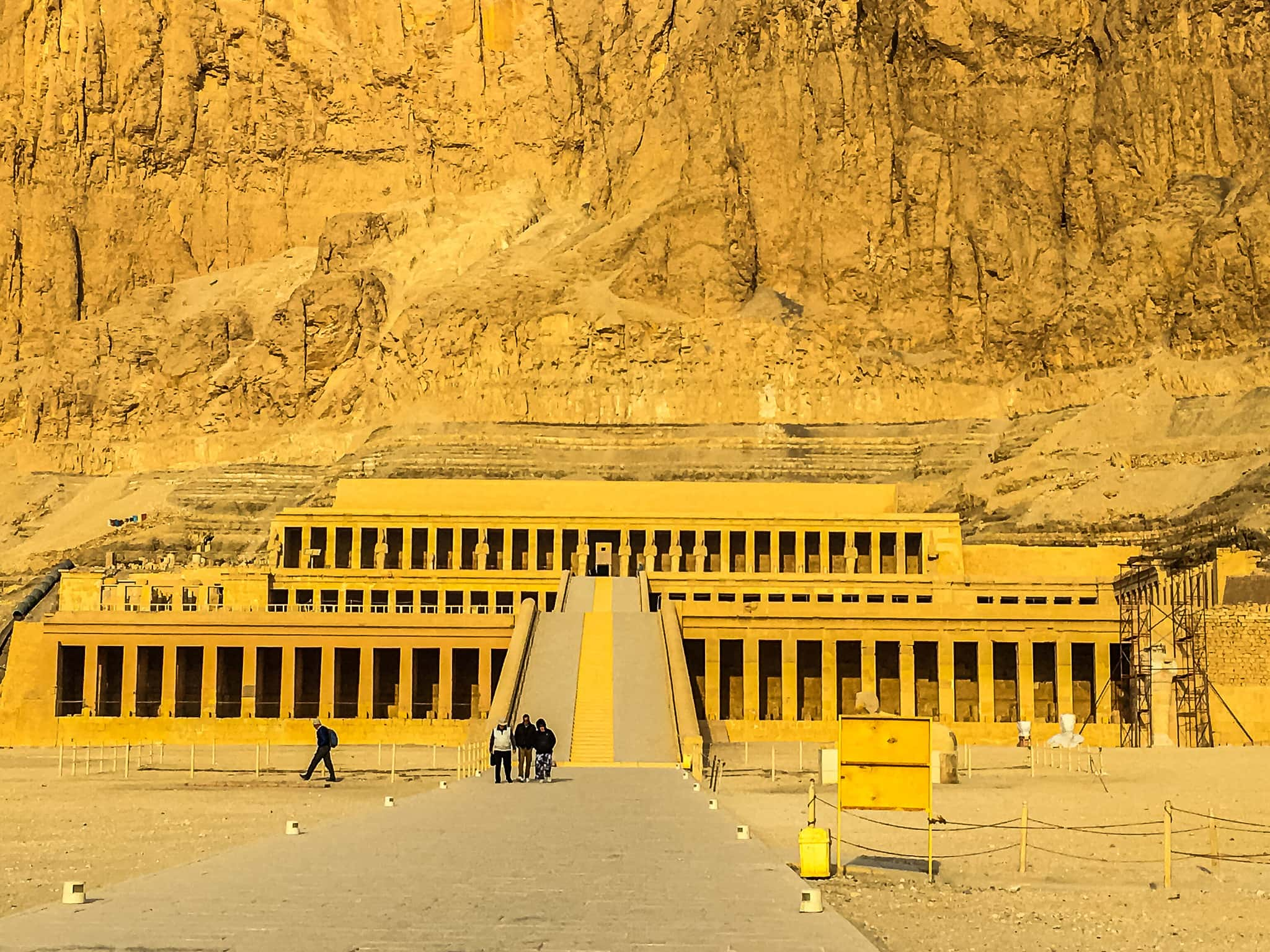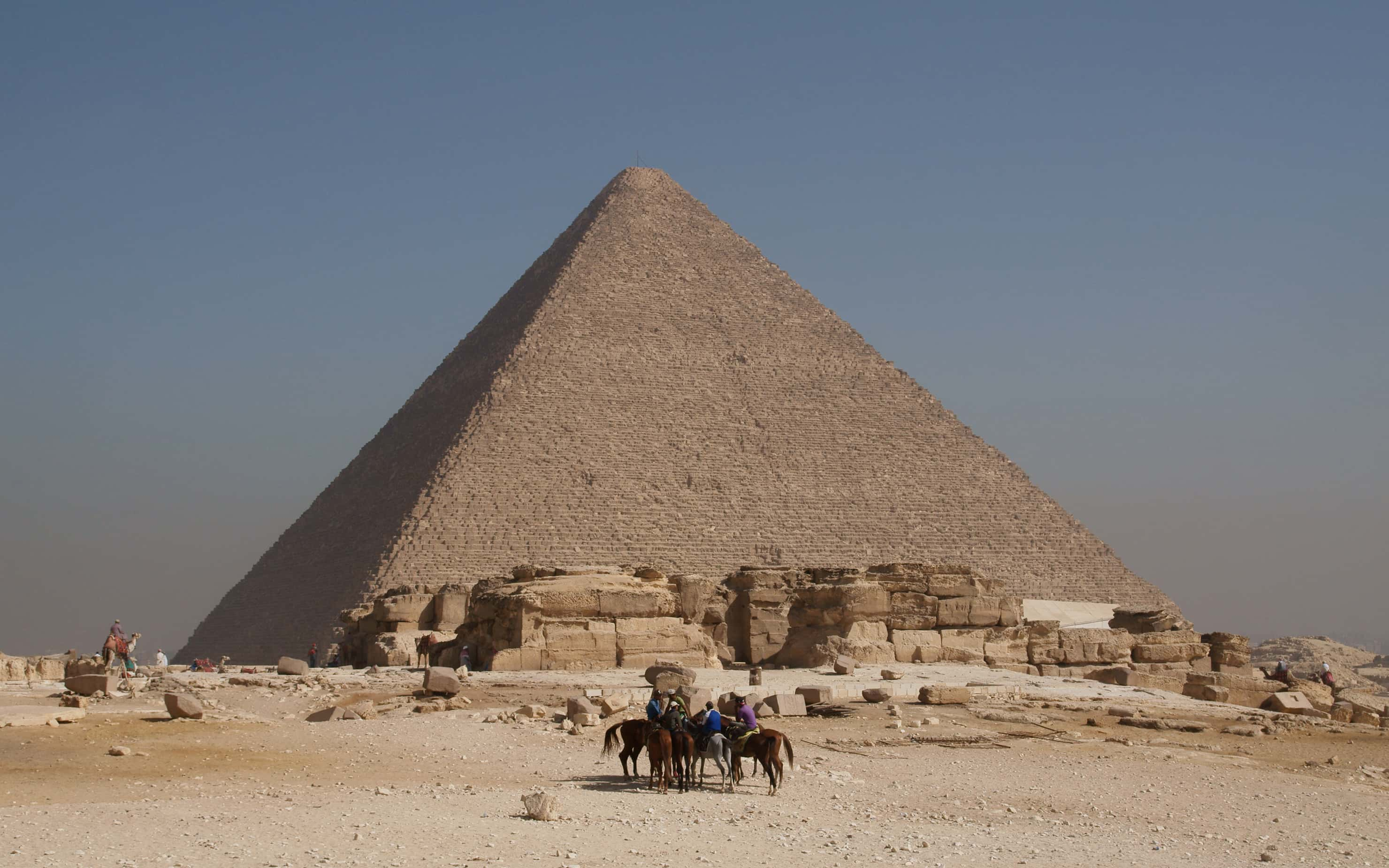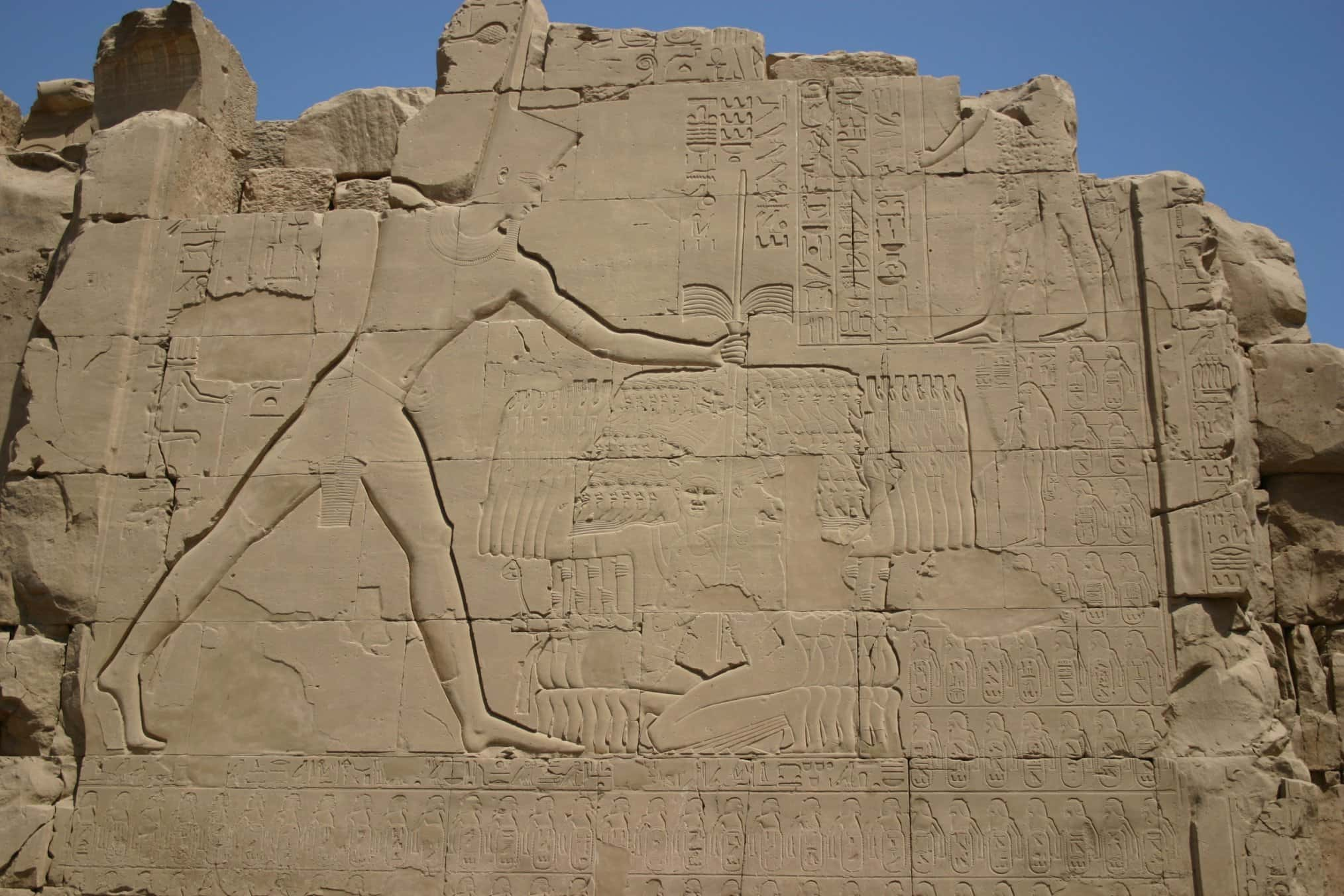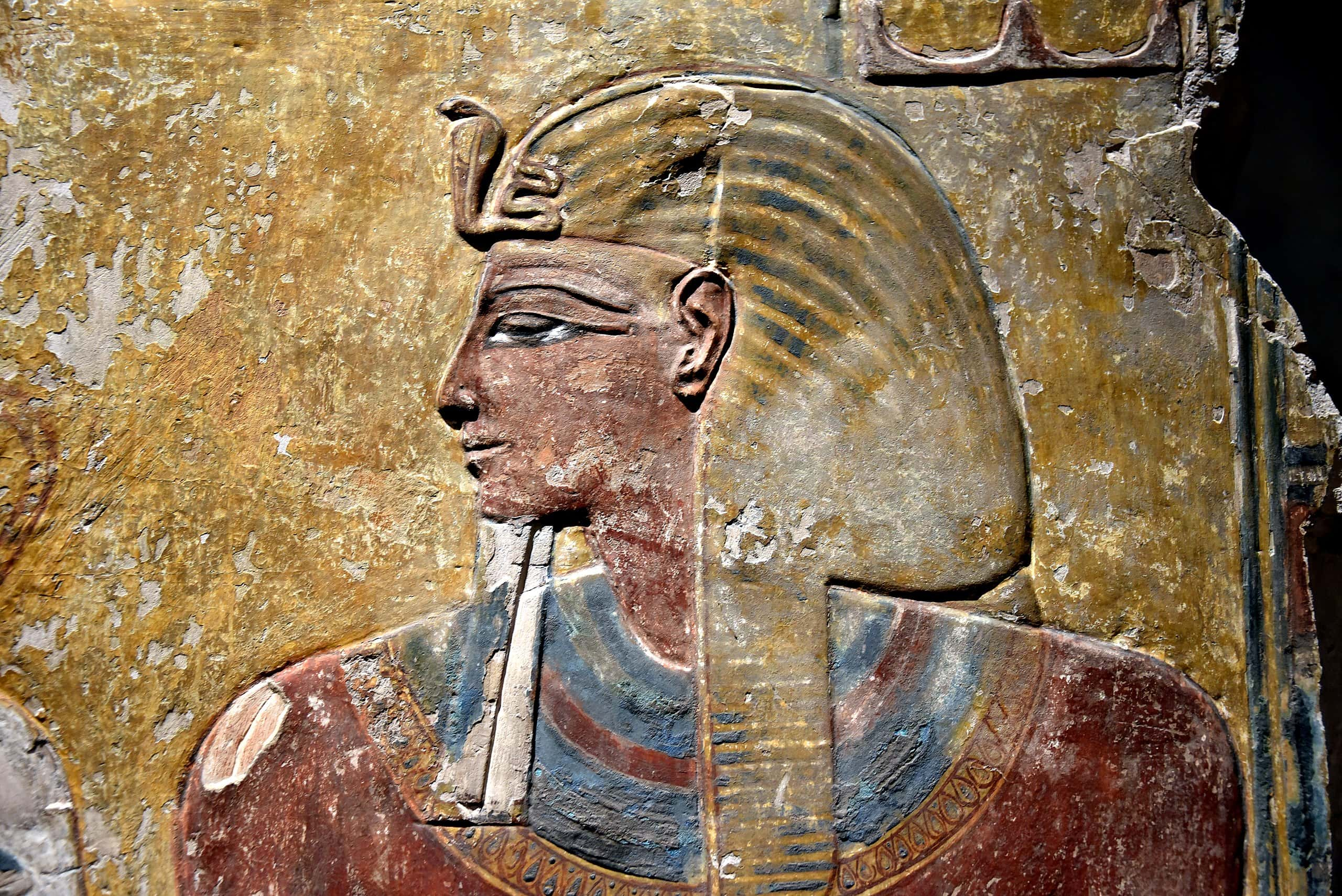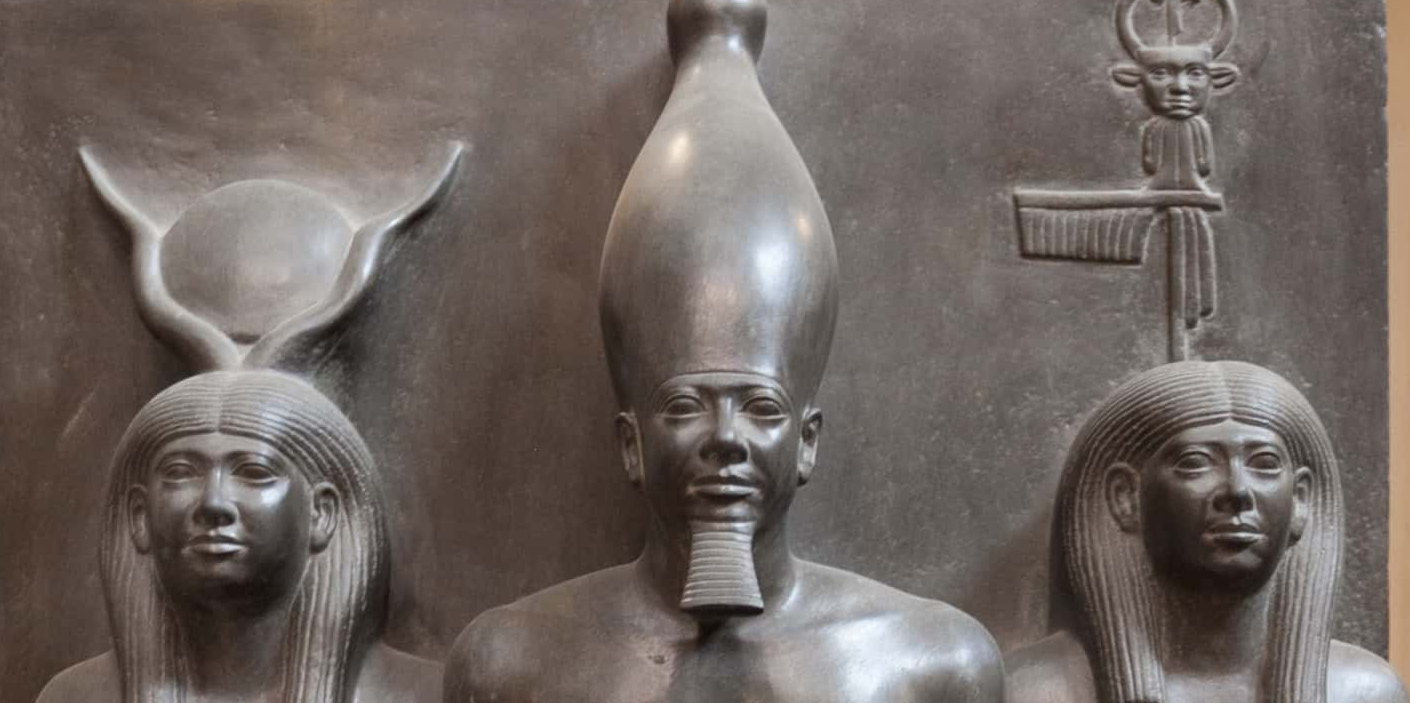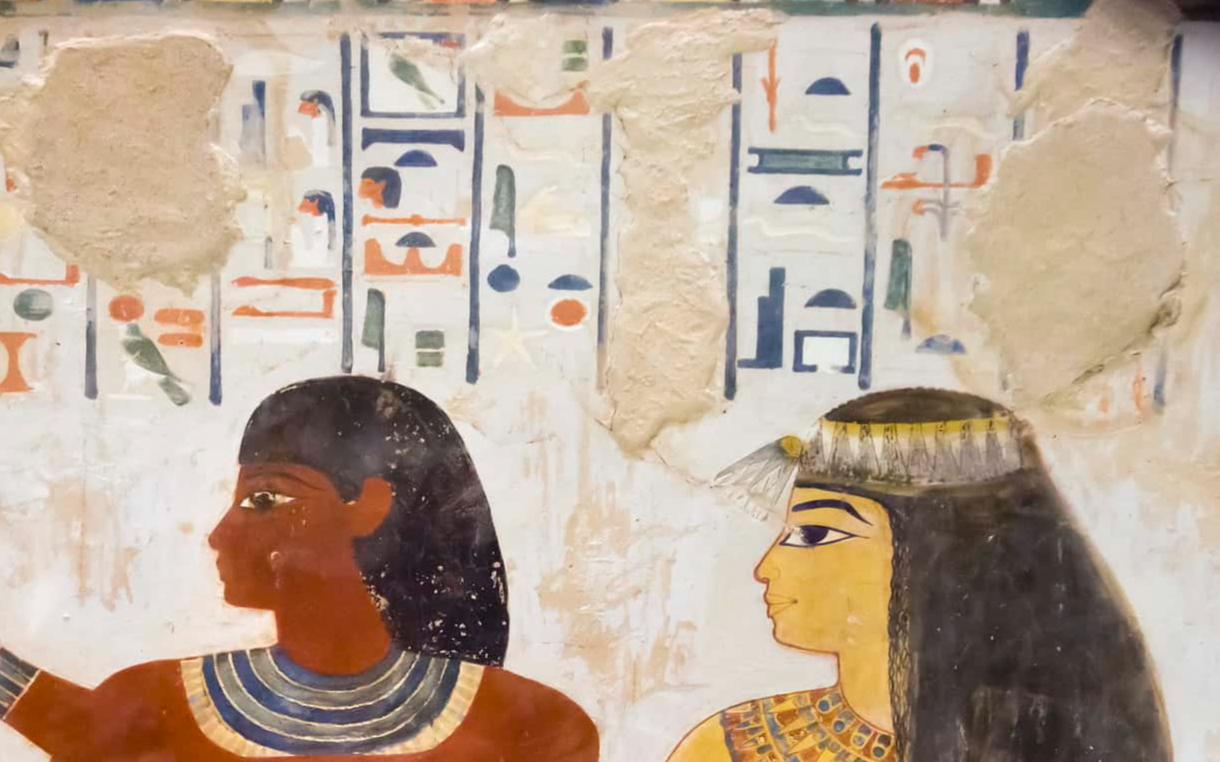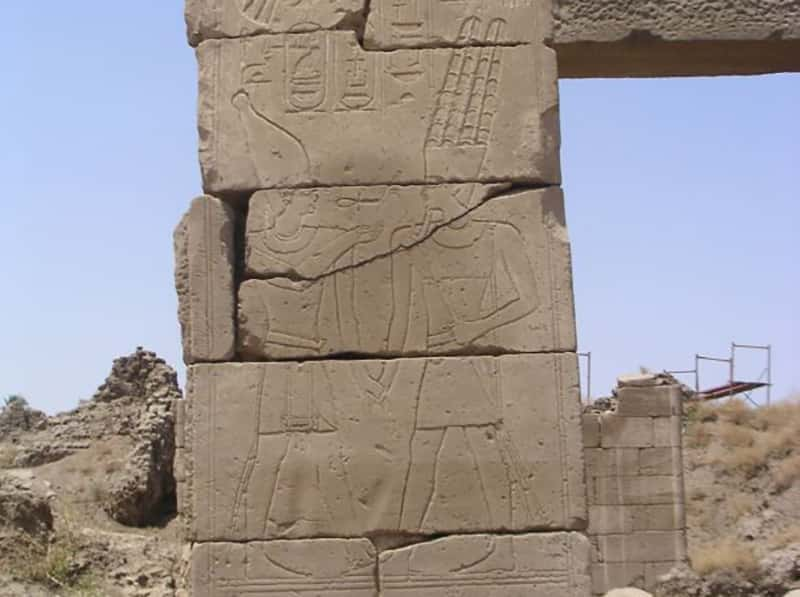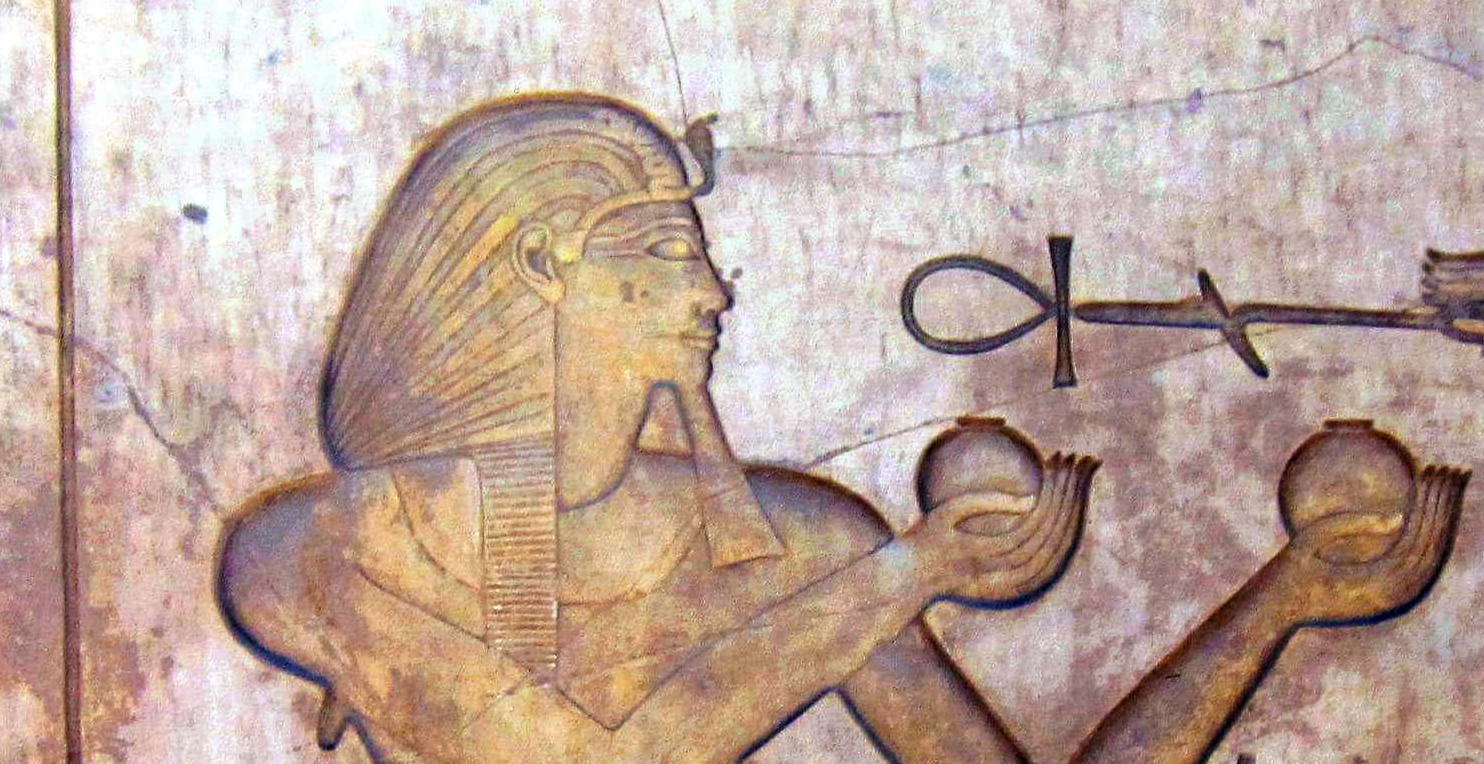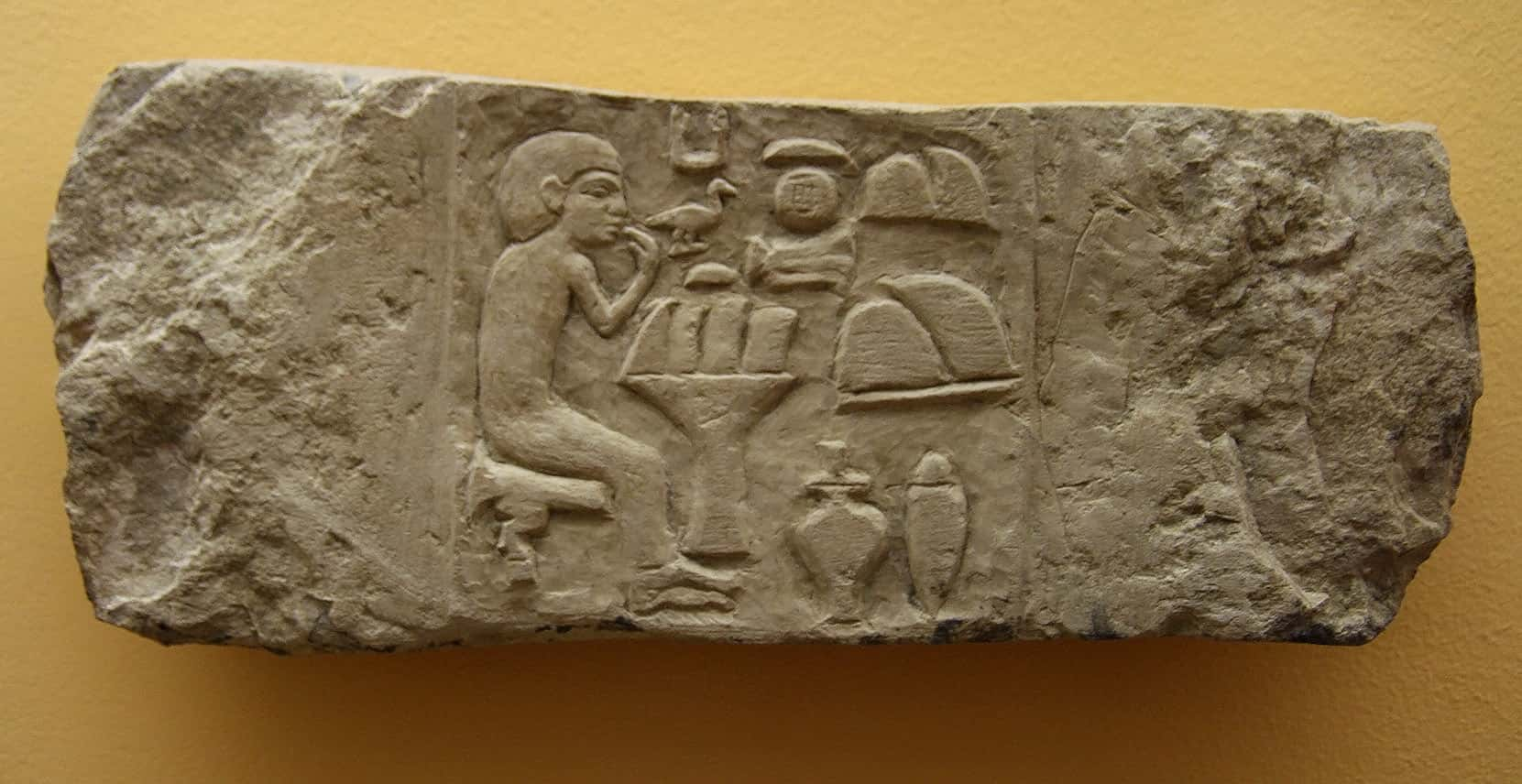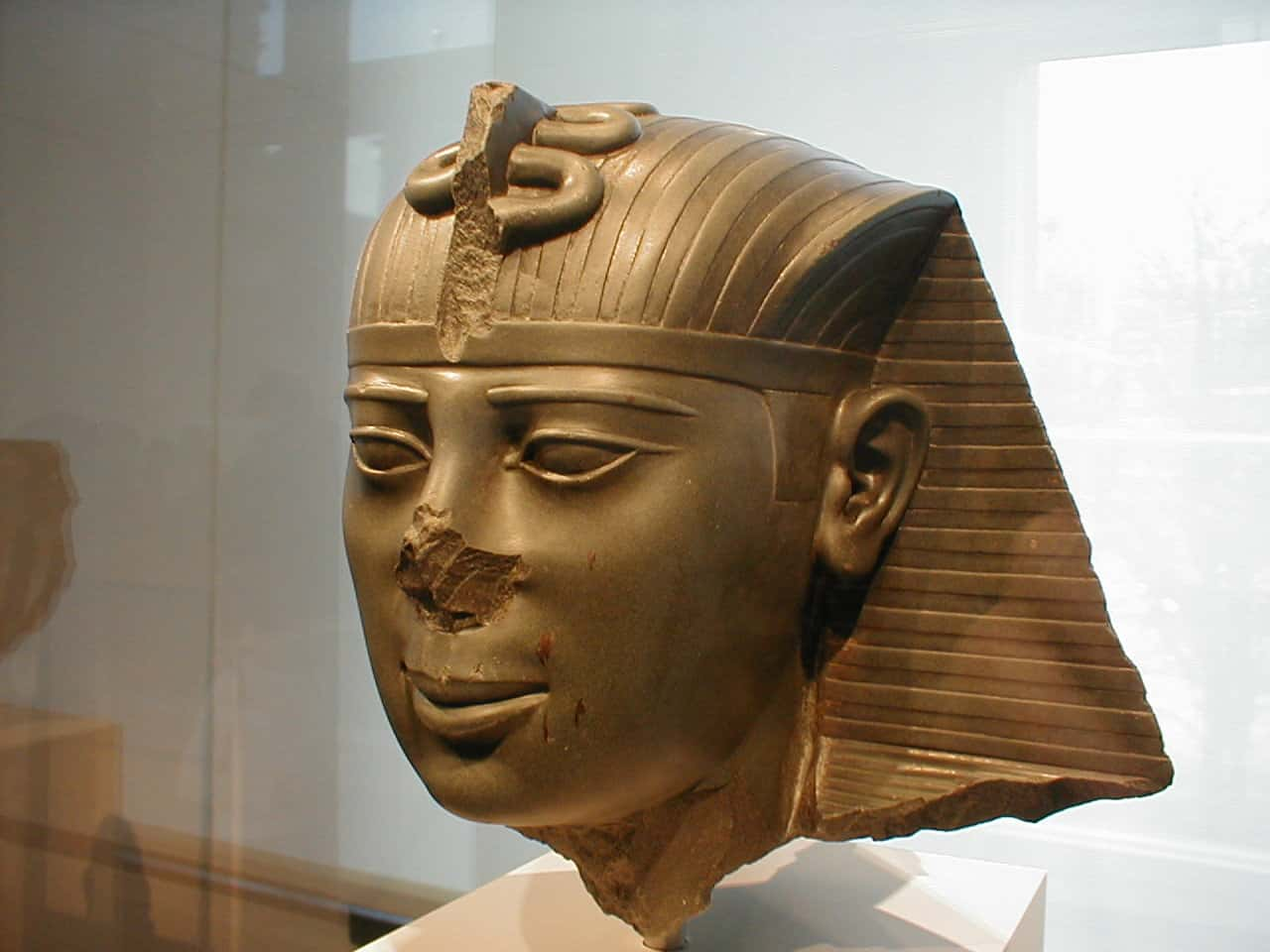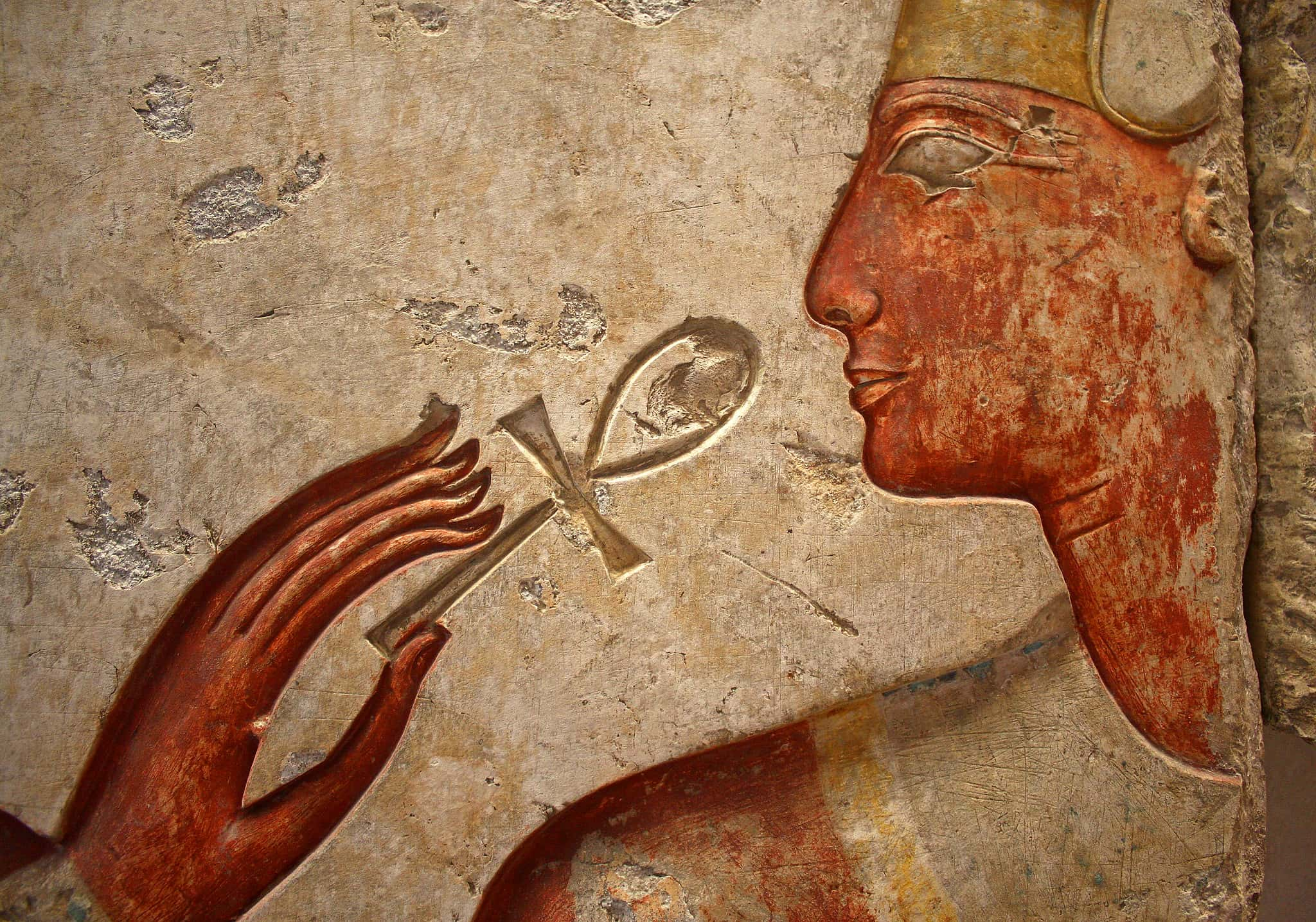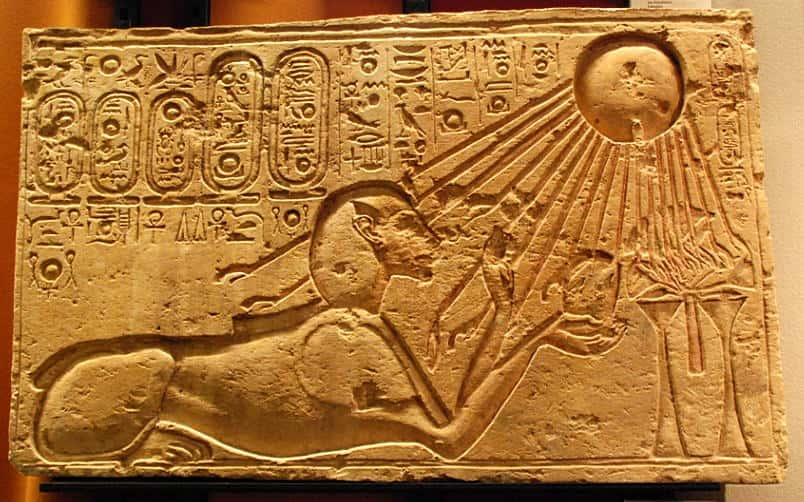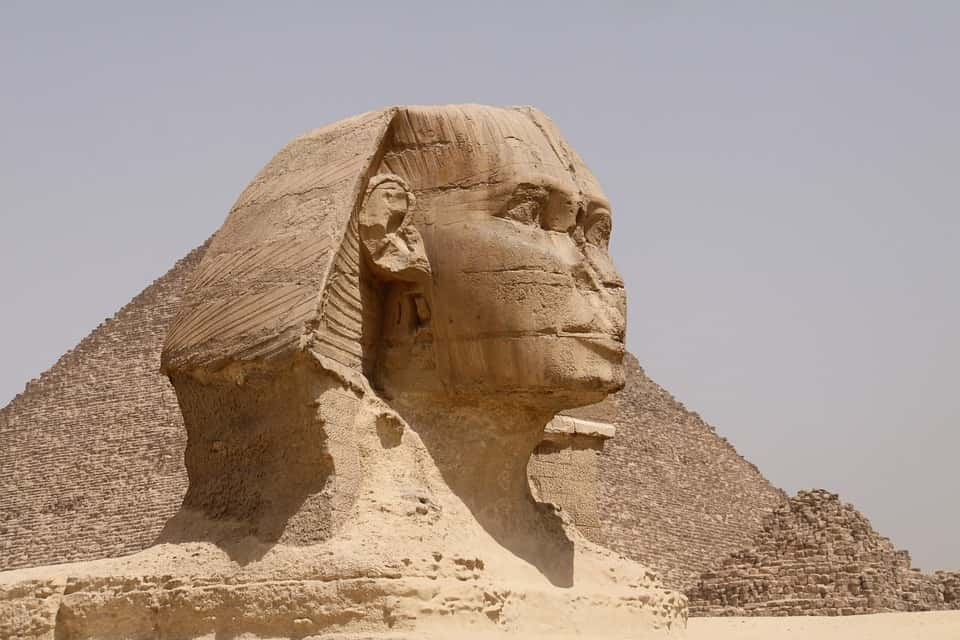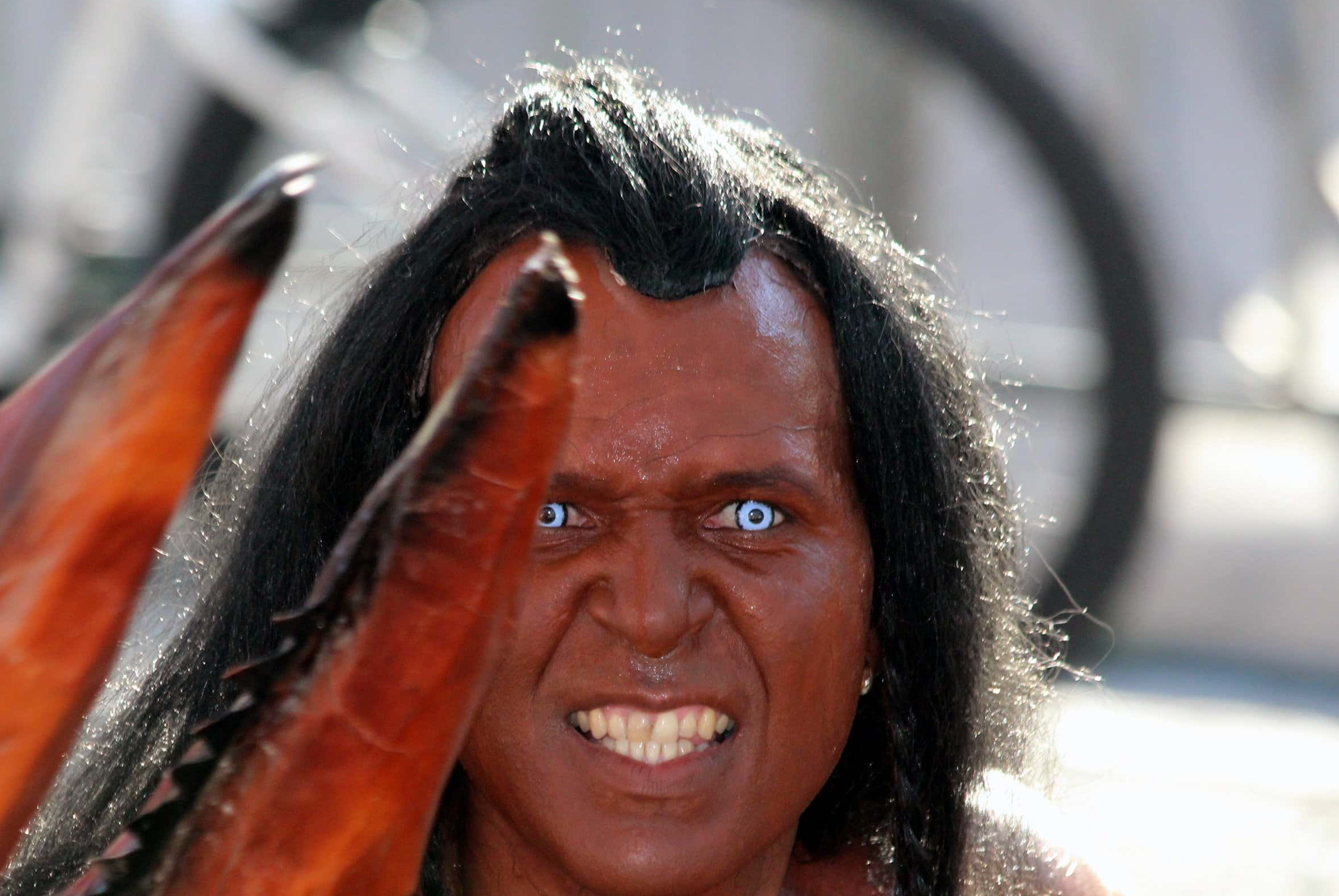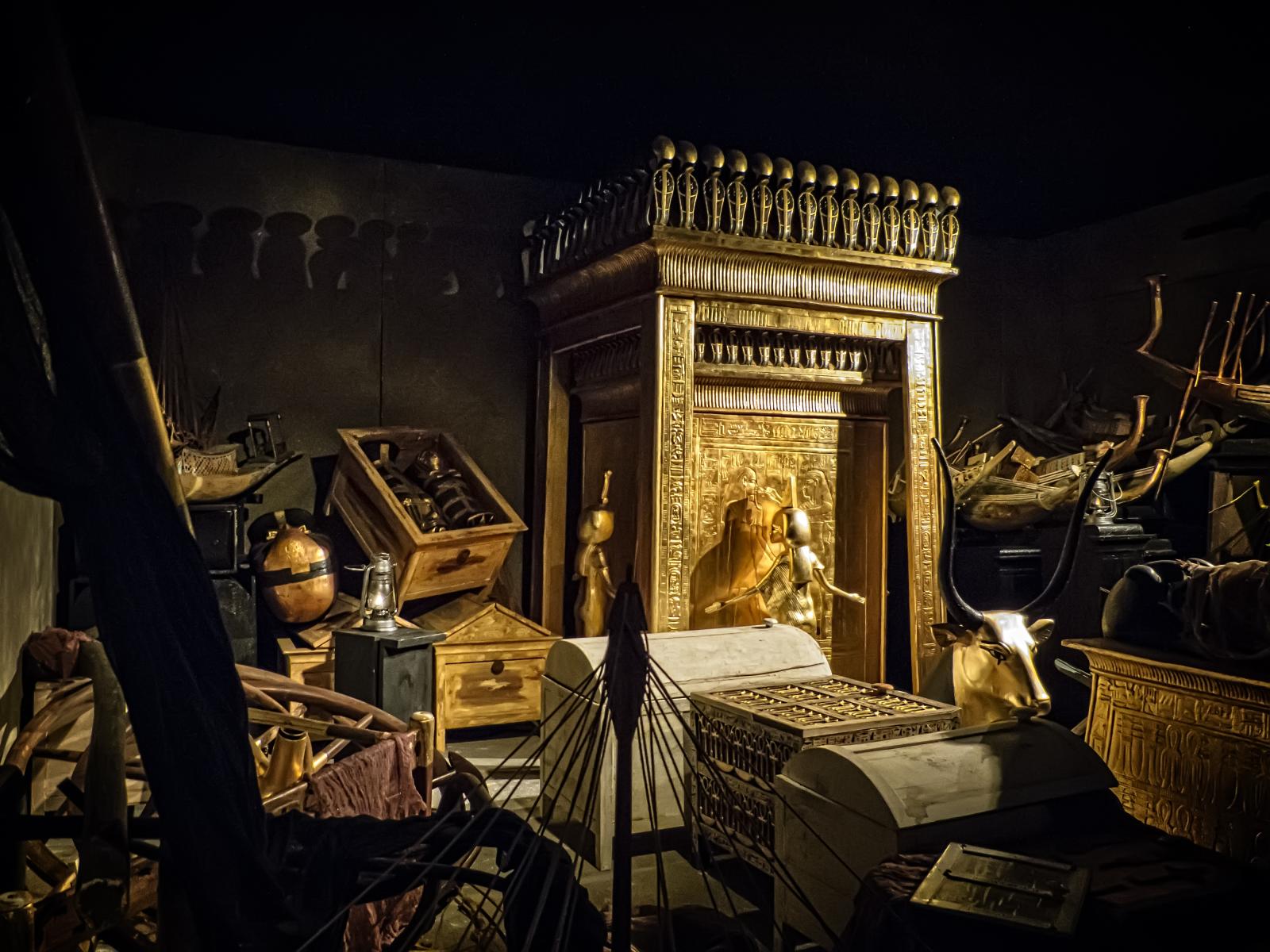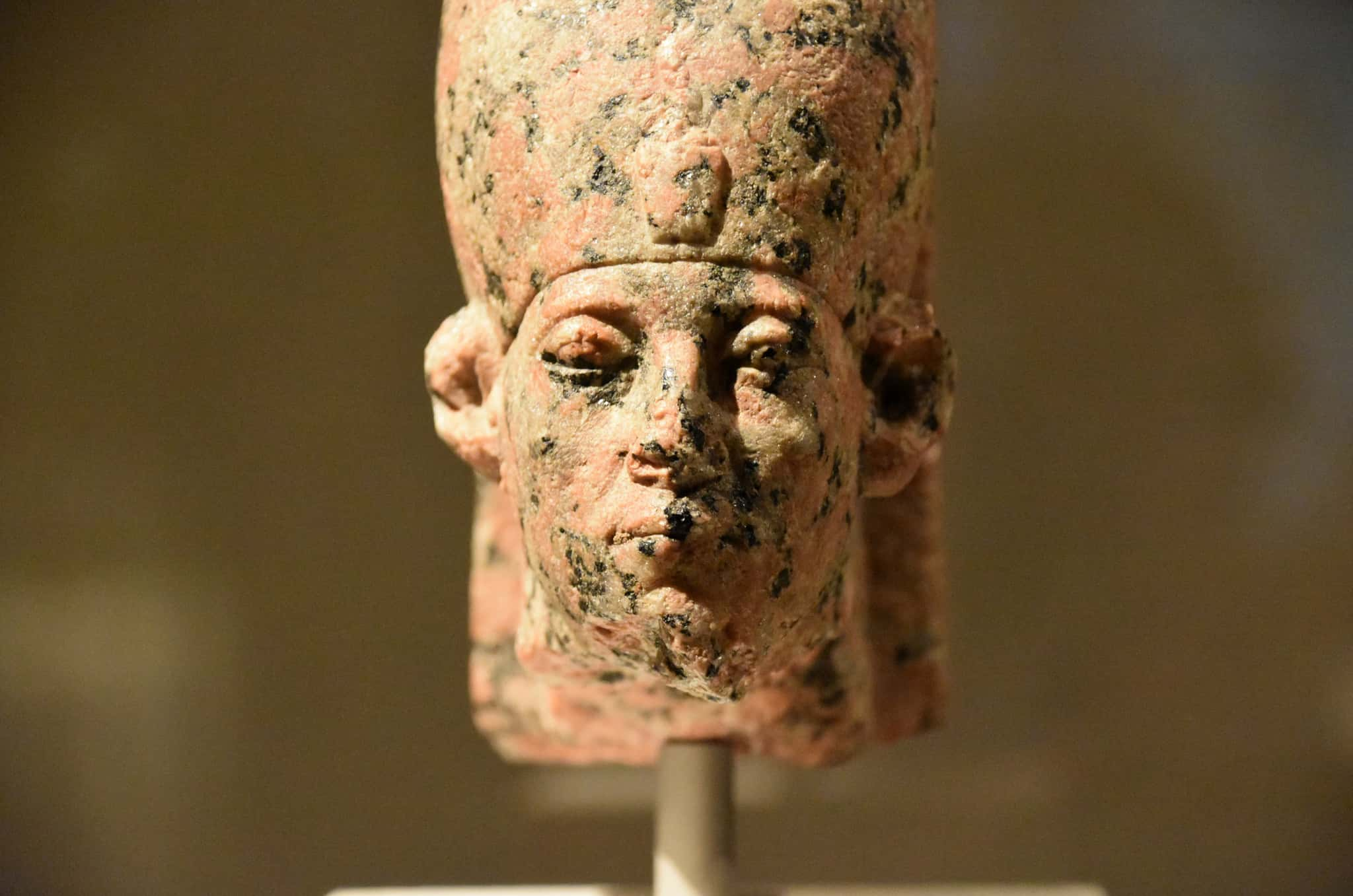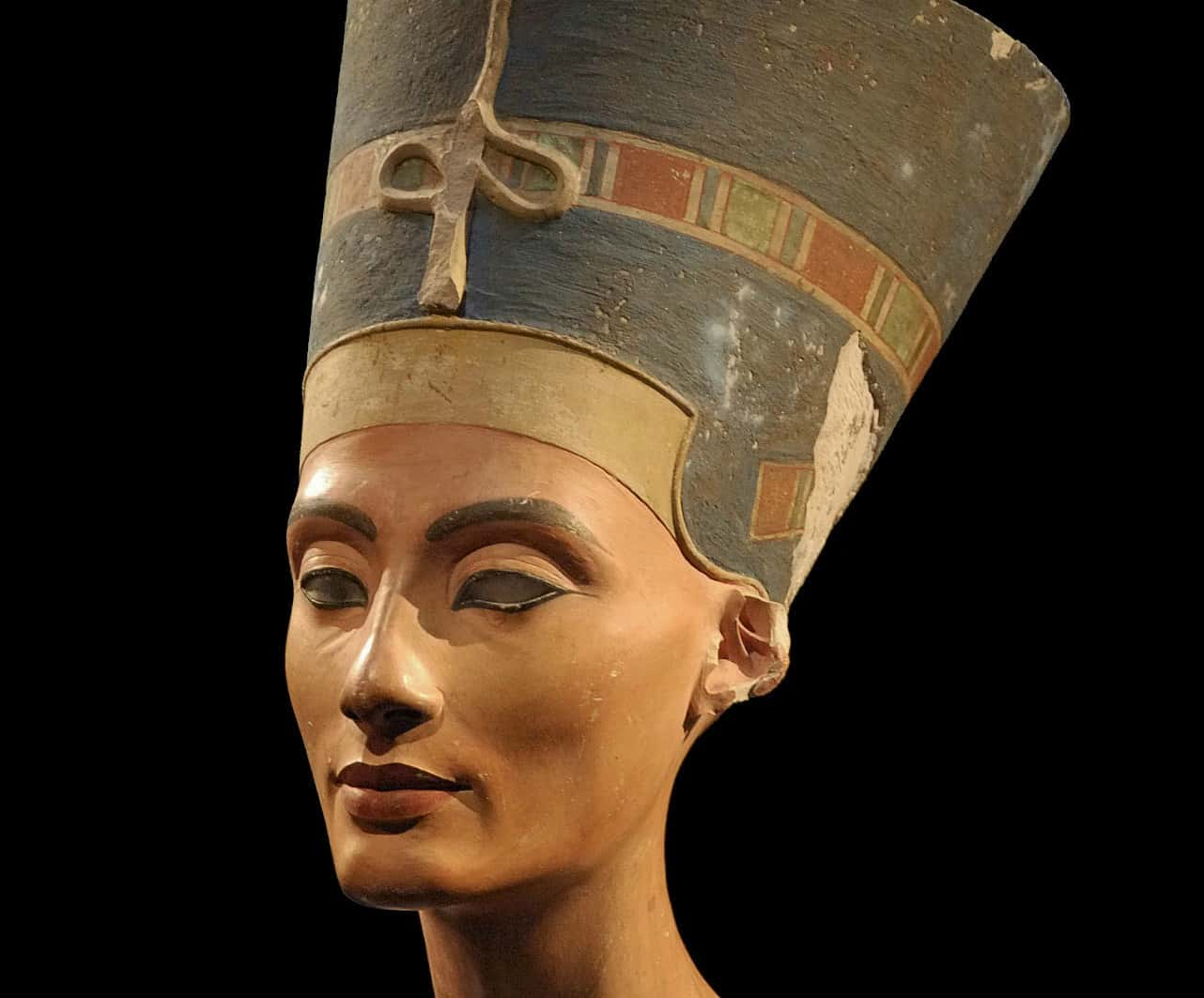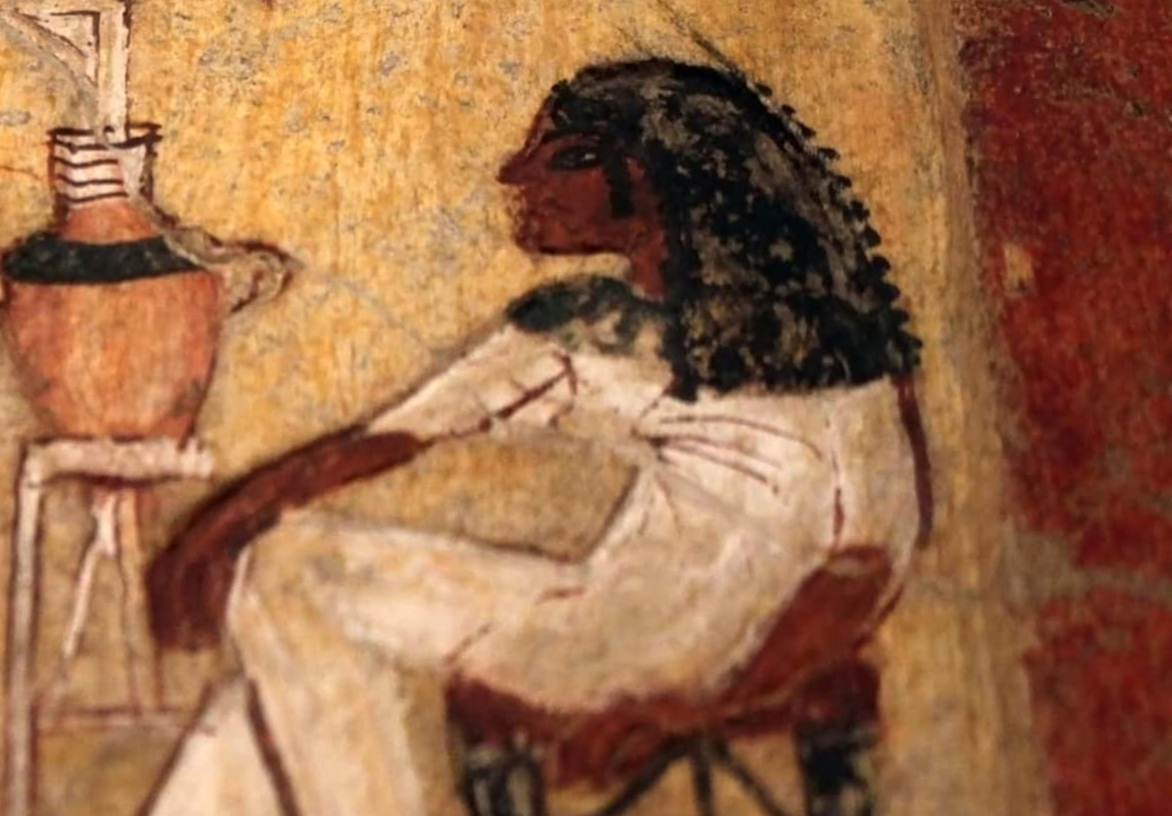“I have commanded that my life abide like the mountains; when the sun shines its rays are bright upon the titulary of my majesty, my Horus is high upon the standard... forever".—Hatshepsut
What’s beyond the golden mask? The pharaohs were a fascinating bunch. During the height of ancient Egyptian culture, it was the title given to the political and religious leader of the Egyptian people until the Roman Annexation in 30 BCE. Considered to be a god on Earth, the pharaoh was the most powerful person in Egypt. Below are 42 facts about these ancient rulers.
1. Dual Roles
The pharaoh held two titles: Lord of the Two Lands and High Priest of Every Temple. As High Priest of Every Temple, the pharaoh was duty-bound to build temples honoring the Gods, perform religious ceremonies, and choose the location of temples to be built. As Lord of the Two Lands, the pharaoh ruled all of Egypt. He or she would collect taxes, make laws, start wars, and protect and defend the country from threats.
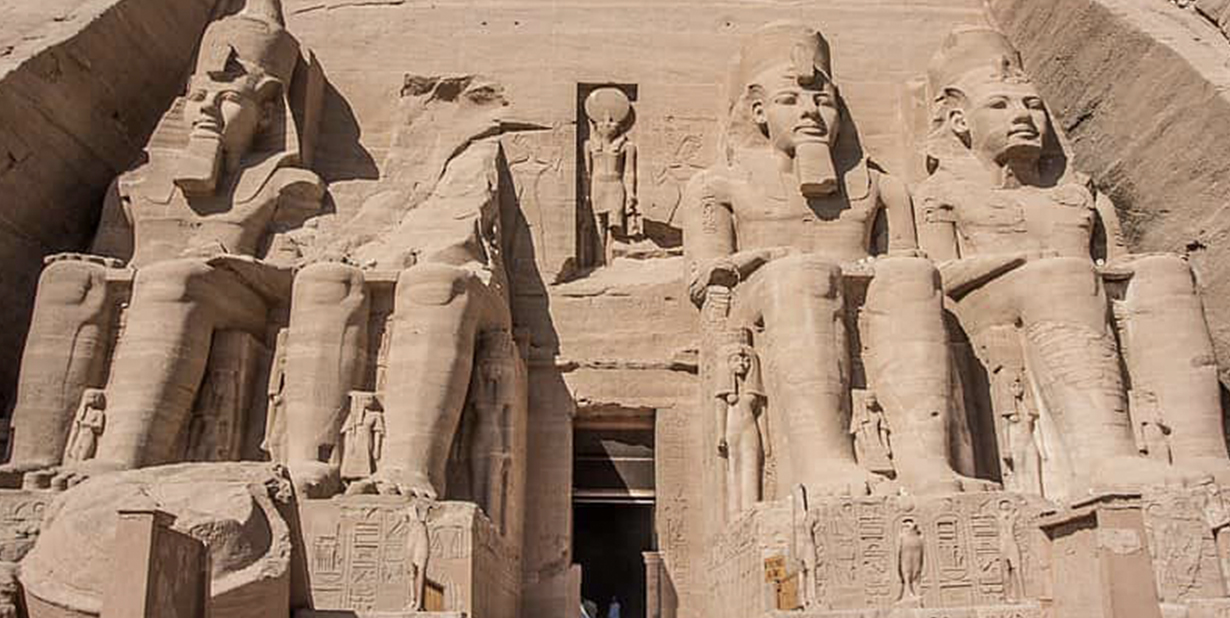
2. Gender Neutral
In Ancient Egypt, all rulers were called king regardless of their gender since there was no Egyptian word for queen. The word pharaoh is not actually an Egyptian word. It is a Greek or Hebrew pronunciation of the Egyptian word pero or per-aa and means “great house". It originally referred to the King’s palace and didn’t become a term for the ruler until about 1450 BC.
3. No Exact Number
It is estimated that there were approximately 170 pharaohs in all, but there is little written-evidence to be able to know for sure. Historians also didn’t formally start counting the pharaohs until sometime in the third millennium BC when Upper and Lower Egypt were unified. It is generally believed that Menes was the first King of all of Egypt in 3100 BC, but the only definite fact is that the last Pharaoh was Cleopatra VII.
4. It Took Work
A person didn’t just get to wake up and become pharaoh. Training was a long and difficult period that began when the heir to the throne was extremely young. Lessons were focused on building strength and endurance, and he had to learn to hunt and fish and ride and break horses. If they were successful in their lessons, the pharaoh would take them on as co-regent, and upon the pharaoh’s end, they would assume full control.
5. This Girl’s Allowed
With the exception of a small percentage of female rulers, pharaohs were mostly male. The first female Pharaoh was Hatshepsut, who declared herself king upon her half-brother/husband’s demise. The move was highly contentious, but she busted her behind defending her right to the throne.
6. The Child King
Pepi II was only six years old when he became King of Egypt, and he behaved exactly as one would expect a spoiled young prince to act. When an explorer wrote to him claiming to have met a dancing pygmy, he ordered the man to bring it to the palace so he could see it for himself. His attitude didn’t change with age. As he got older, he simply grew crueler in his demands. He was said to have made slaves strip uncovered and cover themselves in honey just so the flies wouldn’t bother him.
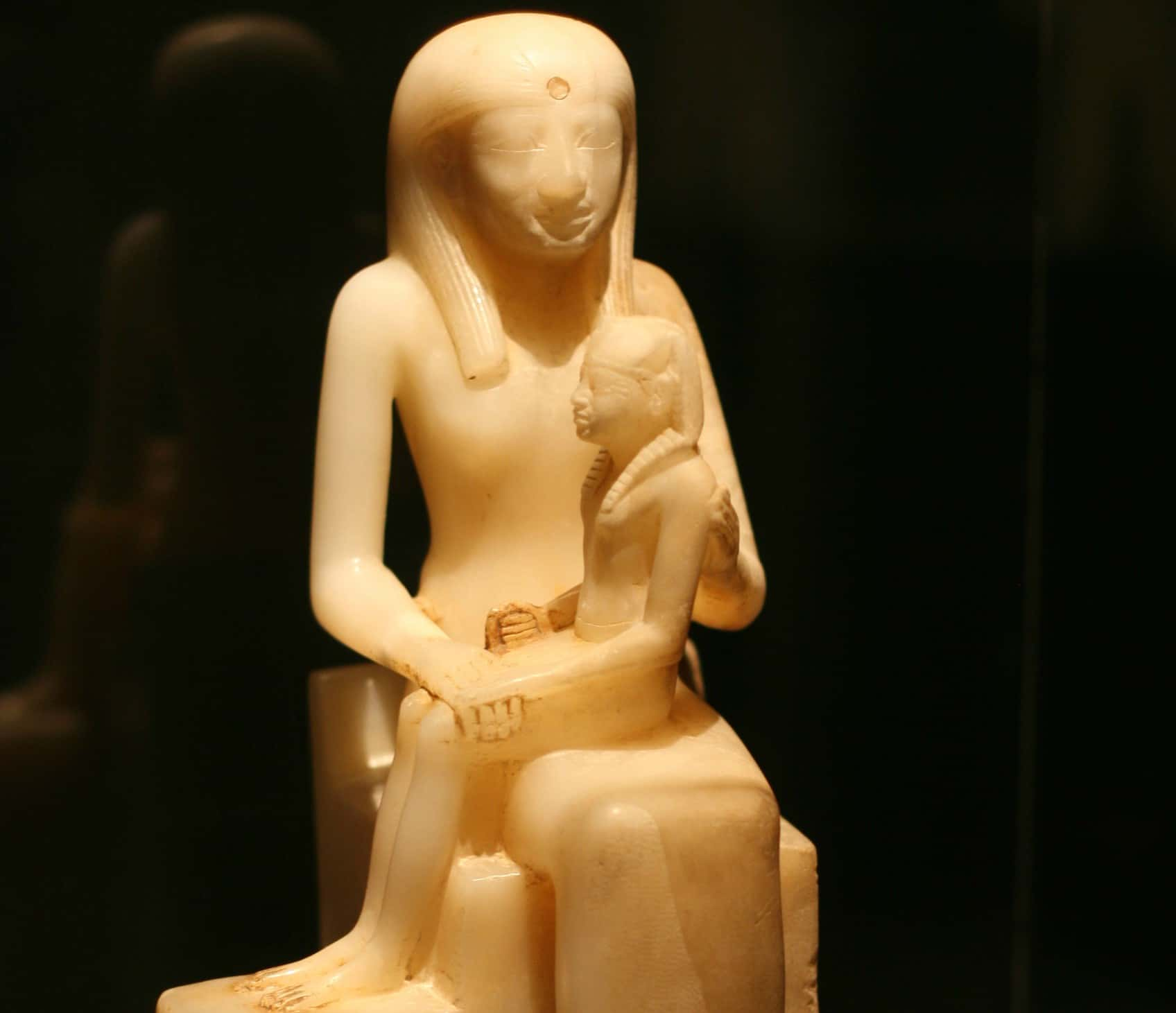 Flickr, ego technique. Statuette of Queen Ankhnes-meryre II and her Son, Pepy II
Flickr, ego technique. Statuette of Queen Ankhnes-meryre II and her Son, Pepy II
7. Year Of Coronation
A pharaoh’s ascension to the throne was one of the most important rituals in Ancient Egypt, and the event was celebrated with feasts, rites, and ceremonies that were all part of the coronation feast. The feast could last for as long as a year and is described by modern Egyptologists as the “year of the coronation".
8. Offerings To The Gods
One of the pharaoh’s daily rituals was to make offerings to the gods. The people believed that only a pharaoh could enter the temples and approach and touch the statues which held the spirits of the gods.
9. They’re Totally Fake!
Most statues of pharaohs depict them as having long, tightly braided beards, but the beards were completely synthetic. Cleanliness was highly important to the ancient Egyptians, and this meant keeping their faces free of hair. The beards were worn to imitate their god Osiris, who also wore a fake beard. They believed that in doing so, they could attain his eternal reign.
10. Reclaiming Her Throne
Cleopatra VII acted as co-regent with her younger brother Ptolemy XII. In 49 BC, a group of senior advisors acting in Ptolemy’s name forced Cleopatra to flee the country, but she secured the backing of Julius Caesar and with the help of Rome’s army, reclaimed her throne.
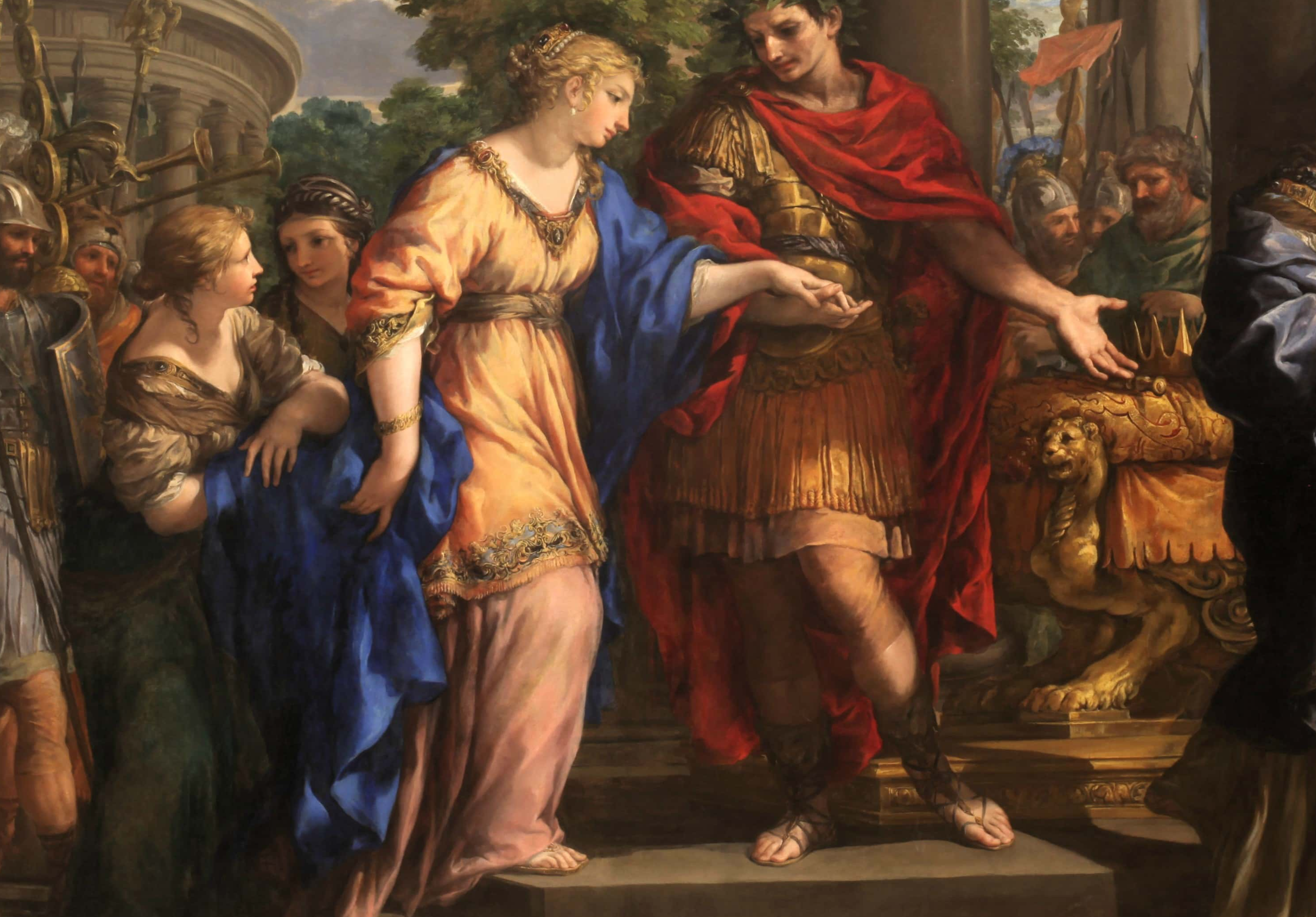 Pietro da Cortona, Wikimedia Commons
Pietro da Cortona, Wikimedia Commons
11. Preserving The Bloodline
A pharaoh’s ascension to the throne was usually through blood, but the heir wasn’t necessarily the oldest son. The declared heir could be the son of the pharaoh’s chief consort, or of a lesser-ranked but favored wife. In the beginning, pharaohs would marry an aristocratic woman to link their dynasty to the upper classes of the Egyptian capital. They also adopted the practice of marrying within the family, often marrying sisters or daughters to keep their bloodlines pure.
12. Worst Boss Ever
Akhenaten was a ruler who was basically the worst kind of boss possible. To build his new city in honor of the god Amarna, he brought 20,000 people to the site and forced them to keep working until they pretty much dropped gone. The bones found in the town’s cemetery suggested that more than 2/3 of the men broke at least one bone while they worked, and the other third literally broke their backs. He also starved his workers and if anyone tried to escape he ordered them spiked to passing, so the choice was either work to end or be ended.
13. Not Just For Beauty
Fashion has changed throughout history.
Both male and female pharaohs painted their eye areas with black kohl. Beauty was equated with holiness, and aside from the cosmetic use, they painted their eyes to reduce light reflection. The pharaohs also believed that by creating an almond shape with their eyes, they would more closely resemble the god Horus, and offer them protection from evil spirits and eye disease.
14. A Symbol Of Power
An Egyptian pharaoh wore a Nemes crown as a symbol of their power and position in society. The crown was a striped headcloth that covered the back of their head and neck with an upright cobra (uraeus) symbol on top. The cobra represented the pharaoh’s readiness to strike enemies with venom at any time.
15. Divine Authority
The crook and flail were traditionally carried by Egyptian pharaohs at important ceremonies like coronations and were a symbol of the pharaoh’s divine authority. The crook was a long staff curved at one end like a shepherd’s staff. When held together crossed over the chest, they likely represented the kindness and strength of the ruler.
16.The Pharaoh’s Curse
Tutankhamun’s curse, or the “curse of the Pharaohs” is a warning that those who would disturb a mummy’s tomb would be punished. The curse could cause bad luck, sickness or end, and does not differentiate between thieves and workers. Since the early 20th century, authors and documentaries have tried to argue that the curse has a scientific explanation, but recent studies suggest that the curse is cultural and not scientific.
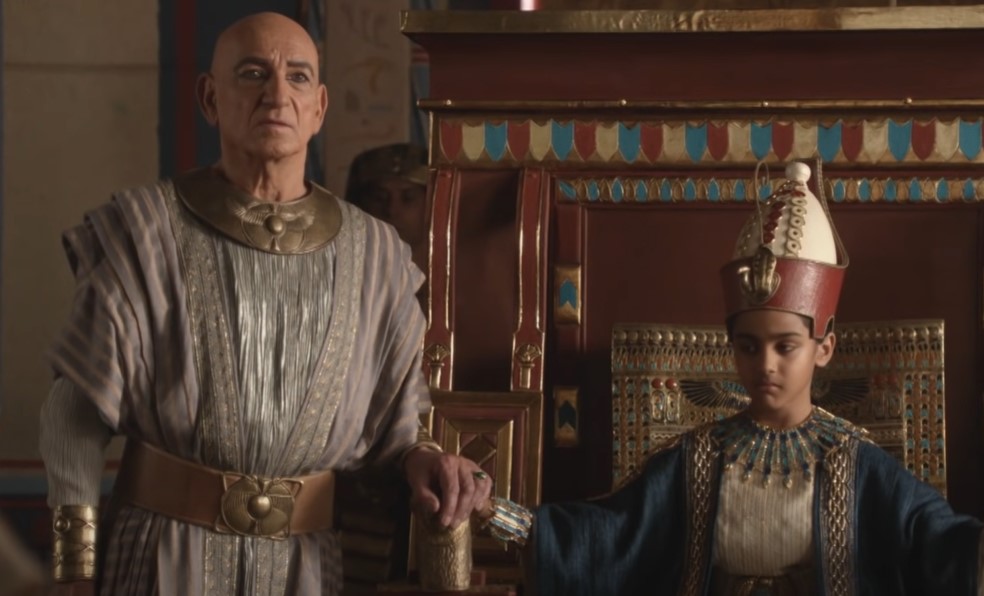 Muse Entertainment Enterprises, Tut (2015)
Muse Entertainment Enterprises, Tut (2015)
17. Famous For…Nothing?
King Tutankhamun, known as King Tut, is the most famous of the Egyptian pharaohs. Tut was just 9 years old when he became pharaoh, and he perished 10 years later. Ironically, most of what is known about Tut has little to do with his less-than-impressive legacy, and more to do with the discovery of his almost perfectly preserved tomb in the early 20th century.
18. Mr. Carter
Howard Carter was a British archaeologist who achieved worldwide fame when he made arguably one of the most famous finds of all-time: the tomb of Tutankhamun.
It wasn't an easy find. Carter spent years searching for the tomb... and by the beginning of 1921, he even had his sponsor, Lord Carnarvon, threaten to pull his finding if he failed to find something that year. Luckily, on November 4 that year a young boy working as a water-fetcher on Carter's expedition stumbled on King Tut's by utter accident-- he was simply digging in the sand with a stick when he uncovered the secret inner chamber.
19. What Ended Tut?
Given all the fame and attention that Tutankhamun has received since his discovery, it's surprising how little we know about the boy-King.
Indeed, one of the most enduring unanswered questions is simply how a Pharaoh could have perished so young. Whenever someone, particularly a king, dies young for no apparent reason, there are always questions. Over the years, there has been speculation as to whether or not Tut was liquidated, and there was certainly no shortage of suspects. Other theories suggested a chariot accident (possible), a hippo accident (more plausible than you’d think), or an old-fashioned combination of malaria, a broken leg, and a bone disorder.
Whatever the cause, one thing appears to be clear: his burial was rushed. A microbiologist at Harvard even proved that the strange brown splotches on the walls of Tut's tomb show that he was sealed in before the paint had a chance to dry. Maybe, someone really wanted Tut gone...
20.The End Of A Dynasty
While she was fighting to reclaim her throne from her brother Ptolemy III, Cleopatra and Emperor Julius Caesar became romantically involved. After Caesar’s liquidation, Cleopatra hooked up with Marc Antony and continued to rule Egypt until Antony was overthrown in Rome. After suffering a crushing army defeat, Antony and Cleopatra perished, and Egypt was taken over by the Romans.
21. Keeping Harmony
The pharaoh’s primary responsibility was to keep harmony throughout the land by correctly interpreting and acting on the will of the goddess Ma’at. A crucial part of keeping balance was the act of conflict. It was the pharaoh’s duty to protect the country’s borders and to attack neighboring countries for their resources if it was done for harmony’s sake.
22. Preparing For The Next Life
During Egypt’s New Kingdom Period between 1539 and 1075 BC, the Egyptians built a series of elaborate tombs for their pharaohs on the Nile’s west bank near Luxor. The series of tombs is known as the Valley of Kings and is the burial ground for pharaohs such as King Tut, Seti I, Ramses II, and other elites of the 18th to the 20th dynasties. The tombs were filled with the treasures that a pharaoh might need for the next life, as well as clothing, furniture, and jewelry. The tombs were also supplied with sufficient food and drink for royal feasting in their next life, sacred objects, and even beloved pets. When the pharaohs perished, their bodies were preserved through mummification so that they could be reanimated in the afterlife. To date, 63 tombs, including the tomb of King Tut, have been discovered there.
23. An Ancient Mystery
The Egyptian Pyramids were commissioned by pharaohs to be their final resting places. The Great Pyramid is 139 meters (455 feet) high and is presumed to have been built by the Pharaoh Khufu in 2550 BC. It also had the distinction of being the largest structure on Earth. The second pyramid was believed to have been built by Khufu’s son Khafare and included a Sphinx monument. Despite the best efforts of scientists, nobody has been able to confirm exactly how they were built, nor have they been able to recreate them. Some people believe that the pyramids were built way more than 4,500 years ago, and they could have been the product of an ancient technology.
By the way...
Recent discoveries have lead experts to believe that it is possible that the pyramids were actually built by paid laborers and not slaves. The latter is a myth perpetuated by Herodotus, the Greek historian who was apparently not a very good historian.
24. The Napoleon Of Egypt
Thutmose III was a brilliant army leader and a notably courageous warrior. He was never above riding into battle with his subjects and greatly expanded the Egyptian empire. In the famous battle of Megiddo, he apparently rode into the middle of the battle in his chariot and he and his men waited out the army of Prince Kadesh to seize the city. Historians now refer to him as the Napoleon of Egypt and he created a legacy that ensured he is still remembered for his bravery thousands of years later.
25. Major/Minor
A pharaoh was not restricted to having just one wife. He would often have a couple of major wives, as well as several concubines. It wasn’t simply for pleasure though. By having multiple women in their lives, they could strengthen their dynasty and guarantee an heir for succession.
For the most part, an heir would be the son of a major wife. So if you were a concubine’s son who hoped to inherit the throne, you wouldn’t hold your breath.
26. Not Today Satan
Menkaure was a pharaoh who ruled sometime in 26th century BC and hatched a scheme to fool the gods into keeping him alive indefinitely.
He got the idea that if night never came, the new day couldn’t start, and time would basically stop. To pull this off, every night he lit as many lamps as possible and tried to pretend that it was still daylight. For the rest of his life, Menkaure didn’t sleep. Instead, he stayed up all night drinking and celebrating until his end inevitably came.
27. Giant King
Sa-Nakht, a king who ruled during the third dynasty, is thought to have been the first known human giant. Studies of his remains revealed that he could have been about 6’2” tall, which would have been unusually tall for the time. He measures about 5 inches taller than Ramesses II, who was the tallest pharaoh on record at about 5’9” tall. Scientists also believe that Sa-Nakht had a condition known as gigantism, which makes the body produce too much growth hormone. While 6’2” tall isn’t an above average height for today, several thousand years ago, he would have been positively gigantic!
28. Save The Cats!
In Ancient Egypt, cats were held in high esteem, largely due to their link with Bastet, the cat-headed goddess of conflict. As a result, it was not permitted to harm a cat or allow one to come to harm.
The Pharaoh Psamtik III took this rule to a whole new level when he told his army to stop fighting because his enemy had released hundreds of cats onto the battlefield. The enemy service men ended anyone who tried to challenge them and even used shields with cats painted on them. The defeated army was forced to march past Cambyses, who threw cats at them while hurling insults at their God. But at least the cats survived!
29. Cure For Blindness
Pheros, son of Sesostris, was blind which was, as the Egyptians believed, because he was cursed—in reality, it was probably an inherited condition. As the story goes, Pheros was angry with the Nile for refusing to cooperate and stop flooding, so he threw a spear at it. As punishment for disrespecting the Gods, he was blinded.
A decade later, an oracle told him that washing his eyes with the urine of a woman who was completely faithful to her husband would cure his blindness. He tried his wife, but it didn’t work. After that, he made every woman he could find pee in a pot so he could pour it on his eyes. Eventually, he found one that worked. He apparently married the woman immediately and had his first wife burnt to end.
30. Establishing A Timeline
A dynasty is a series of rulers all belonging to the same family, and when there are no heirs left to rule, power is transferred to a different family or dynasty.
Egyptian history is usually divided into 31 dynasties, and we know this thanks to the lost work of the 3rd century BC priest Manetho. His book included lists of kings, prophecies, and biographies of both royal and non-royal people. While his history was definitely comprehensive, everything that’s known about it comes from references by other writers, which may or may not have been accurate.
Add to it deliberate omissions of names for political or religious reasons and kings who were completely made up, and it’s possible that there will never be a complete and fully accurate list of kings.
31. Angry, Angry Hippo!
Egypt’s presumed first historical King, Menes was known for uniting Upper and Lower Egypt, but a lesser known point of discussion is his rather bizarre end...
One would think that a man who ruled for 62 years might have perished form an old age or in battle, but this was not the case. He was gone after being trampled by a hippopotamus. Exactly how or why it happened was never recorded, but over time, the story has just become a part of his legend.
32. Take That!
Amasis was not exactly the most refined ruler. He was an alcoholic and a kleptomaniac, and he betrayed his king by switching sides to lead the rebel forces he’d been sent to vanquish and seized the throne. As the story goes, he apparently declared conflict on the King by farting and telling the messenger to “Take that back to the king". How has this not been used in Game of Thrones yet?
33. Name, Age, Occupation
Ramses II, also known as Ramses the Great, ruled for 96 years and is considered to have been one of Egypt’s greatest rulers. His body was exhumed to be displayed in a museum and in 1974, the body was sent to Paris for some freshening up. Not wanting to tarnish the Pharaoh’s legacy by calling him luggage, the Egyptian Government granted him an official passport. The passport listed his name, age (about 3,000 years old), and occupation (King) and also included a disclaimer stating that he was perished.
Maybe the fact that it was a gone body would have clued them in?
34. Religion Over King
The Pharaoh Akhenaten was famous for trying to convince his people to stop worshiping multiple gods, and only worship one main god, called Aten. This didn’t go so well for Akhenaten, and it completely backfired on him. Instead of abandoning their gods, the people rejected him, and upon his end, took every measure possible to erase him from history. Anything in existence with his image on it was destroyed (including temples that he built), he was labeled a traitor, and all mentions of his rule were erased. They didn’t fully succeed, however, and in the 19th century, a few surviving items with his name were discovered.
35. Town Of Cut Off Noses
Amasis was overthrown by an Ethiopian named Actisanes who had a different way of dealing with criminals than his predecessors. He took what was back then considered to be a less harsh approach by cutting off their noses and sending them to a town called Rhinocolura, meaning cut-off-noses. The town was a pretty miserable place to live. The criminals were the only inhabitants, and they were left to fend for themselves and live off of contaminated water and any debris that was lying around. Amazingly, when Romans wrote about the town, they called it the “height of benevolence". Basically, losing your nose and being banished was a hit on the wrist.
36. Holy Seed
In the time of the pharaohs, ejaculating into the Nile River would have been common practice for a king. Since pharaohs were only one step below a God, they would have been seen to be filling the river with his “holy seed,” which was supposed to encourage life to rise from the water and give them a good harvest.
37. Stinging Ruler
Sometime before the beginning of the first dynasty in Egypt, historians believed there was a king named Scorpion. There are several stories about the Scorpion King in Egyptian literature, and some think he was just a myth, but evidence suggests that he did exist. Archaeologists found drawings dating back to 3250 BC that they believe are an example of the world’s oldest writing. Nobody has figured out exactly what the hieroglyphs mean, but a falcon is drawn beside a scorpion, and since falcons are associated with the god Horus, the man in the drawings could be the Scorpion King.
38. Delivered In Her Birthday Suit
Unlike Hapshetsut, Cleopatra had no qualms about taking advantage of her femininity to get what she wanted. To get Caesar to cooperate with her, she supposedly stripped uncovered and had herself wrapped in a carpet and delivered to Caesar as a gift. When he unrolled the carpet, Cleopatra’s uncovered form was revealed. As a result of this act, the pair started an affair that made them one of the most powerful unions in the world.
39. Mysterious Dagger
When King Tut’s tomb was unearthed, researchers found an iron dagger that was still remarkably sharp thousands of years later. Having a sharp dagger is not strange in itself, but the dagger’s origin is quite mysterious. Scientists have tested the metal and determined it came from a meteorite, and the ancient Egyptians most likely didn’t have the technology to craft a weapon from meteorite debris, so it either came from another more advanced civilization or, as some are convinced, it might have been left behind by aliens.
40. Failure's Intimate Region
The Pharaoh Sesostris was one of Egypt’s greatest army commanders, and he had a bizarre ritual to celebrate his victories. After every battle, he would set up a pillar with a picture of intimate region engraved on it. If his opponent fought courageously, he carved a picture of a male intimate region. If he thought them cowardly, he carved a female intimate rehion. He left the pillars all across the continent, and some still stood 1,500 years later in Syria with the inscription “Failure's intimate region".
41. The Beautiful Woman
Nefertiti likely became ruler of Egypt after her husband Amenhotep IV’s demise, but little is known about her except that her name means “a beautiful woman has come” and that she is depicted romantically and as equal to her husband in art. Just a few years after taking the throne, she disappeared from history. Previously, historians believed she must have perished from a plague ravaging the city, or else perhaps even from a natural demise. In 2012, however, archaeologists discovered an artifact that mentions Nefertiti and her husband after the time period they thought she perished, indicating that they needed to rethink the last years of her husband's reign and her life.
42. What Woman?
Being a female ruler in Ancient Egypt was definitely not easy, and Hatshepsut had to take extraordinary measures to accomplish her goals. For most of her rule, she masqueraded as a man both in person and in pictures. She ordered artists to depict her with big muscles and a beard. She would also introduce herself as “Son of Ra”, and most likely wore a fake beard as well. Interestingly enough, her son practically erased her from history to make sure that there were no records of there ever having been a female ruler. It wasn’t until 1903 that historians even figured out that she’d existed.
43. Fast Food Diet
The pharaohs clearly never heard of the food pyramid, because their diets were practically the equivalent of living on McDonald’s today. Their diets were extremely high in carbs and sugars from food and drink like bread, honey, brew, and grape beverage. They would have also enjoyed numerous banquets and feasts of foods prepared with lots of fat and oil. Examinations of mummified bodies of pharaohs today have revealed that most were overweight and unhealthy, and may have suffered from conditions like diabetes.
Sources: 1, 2, 3, 4, 5, 6, 7, 8, 9, 10, 11, 12, 13, 14, 15, 16, 17, 18, 19, 20, 21, 22


